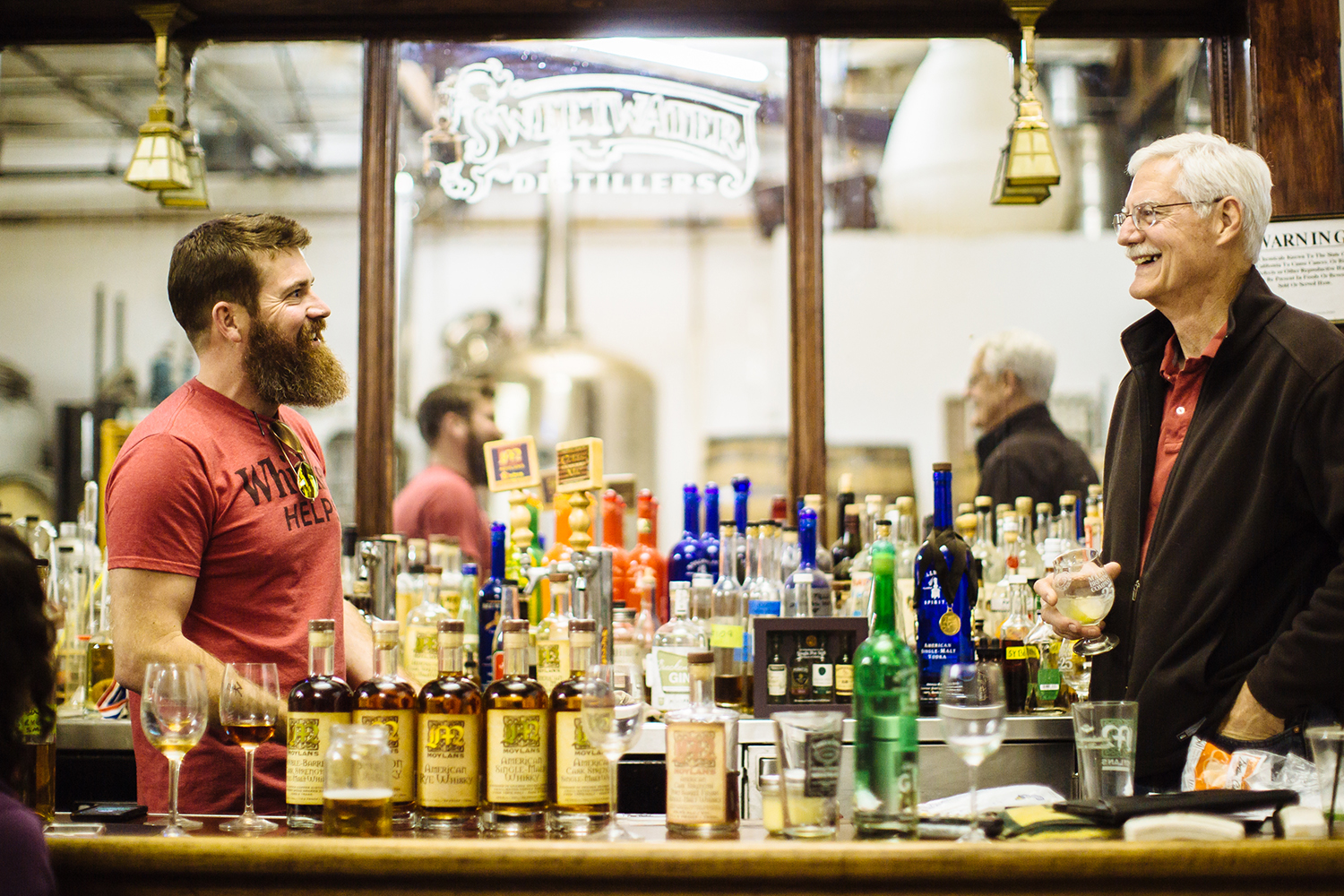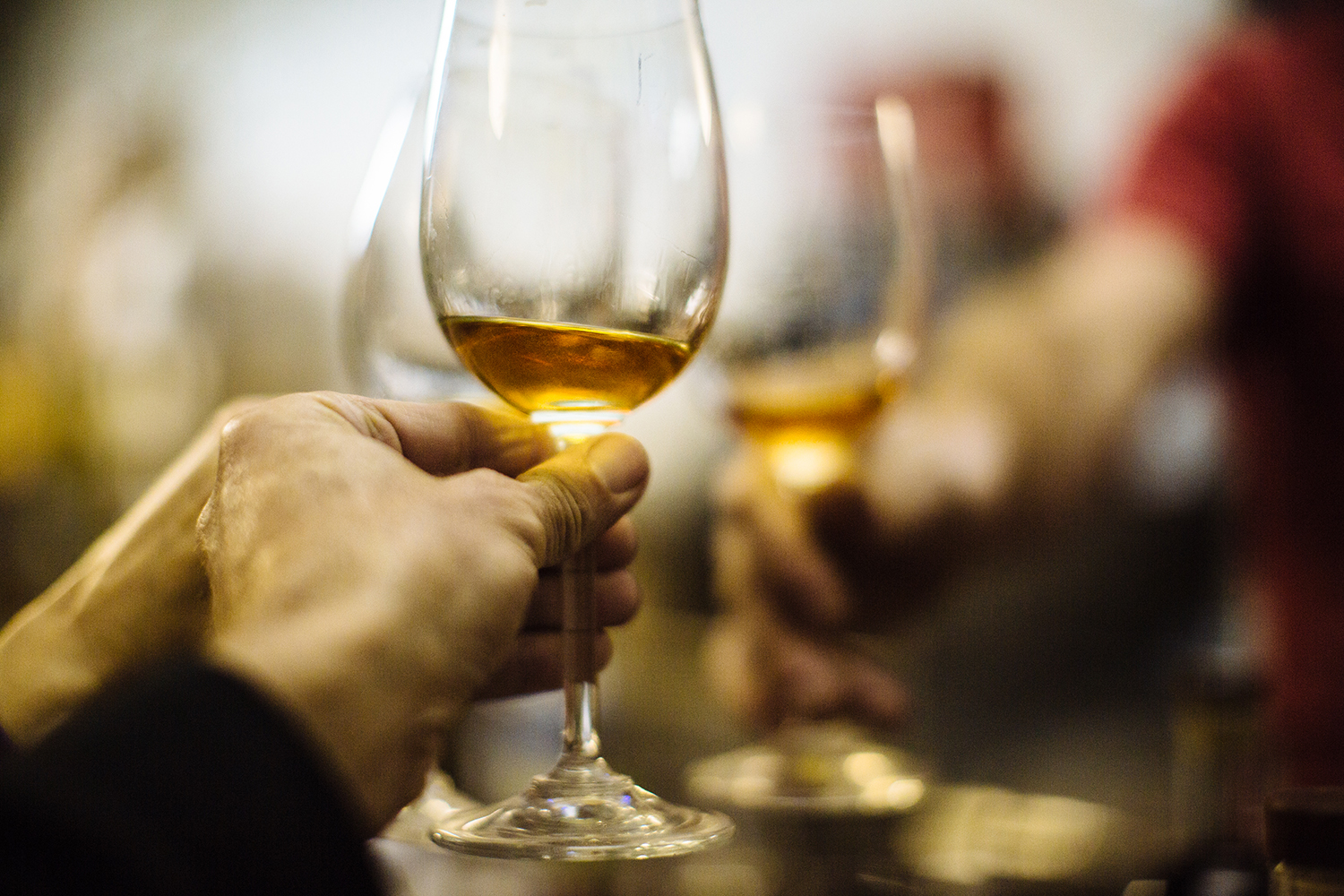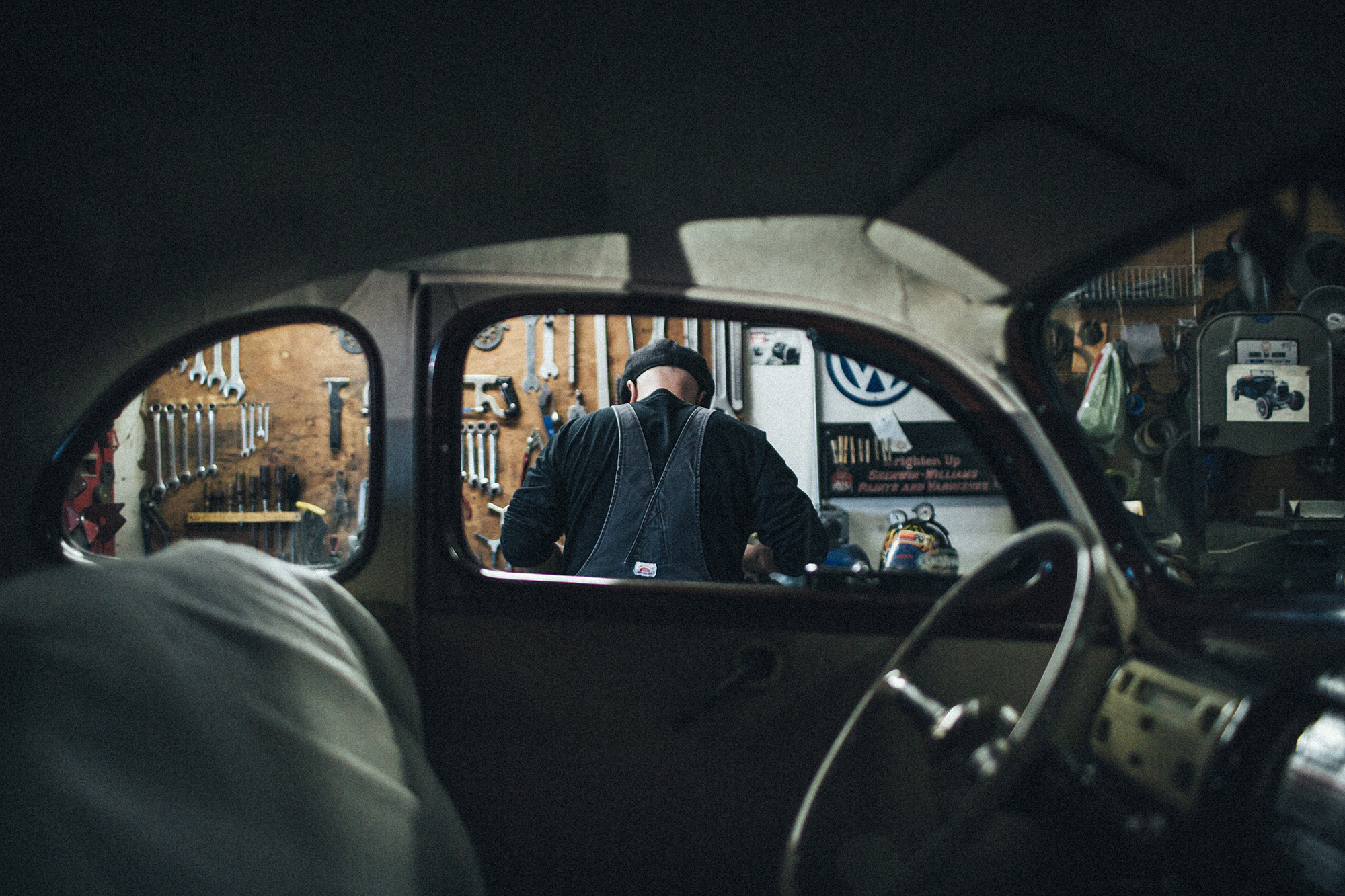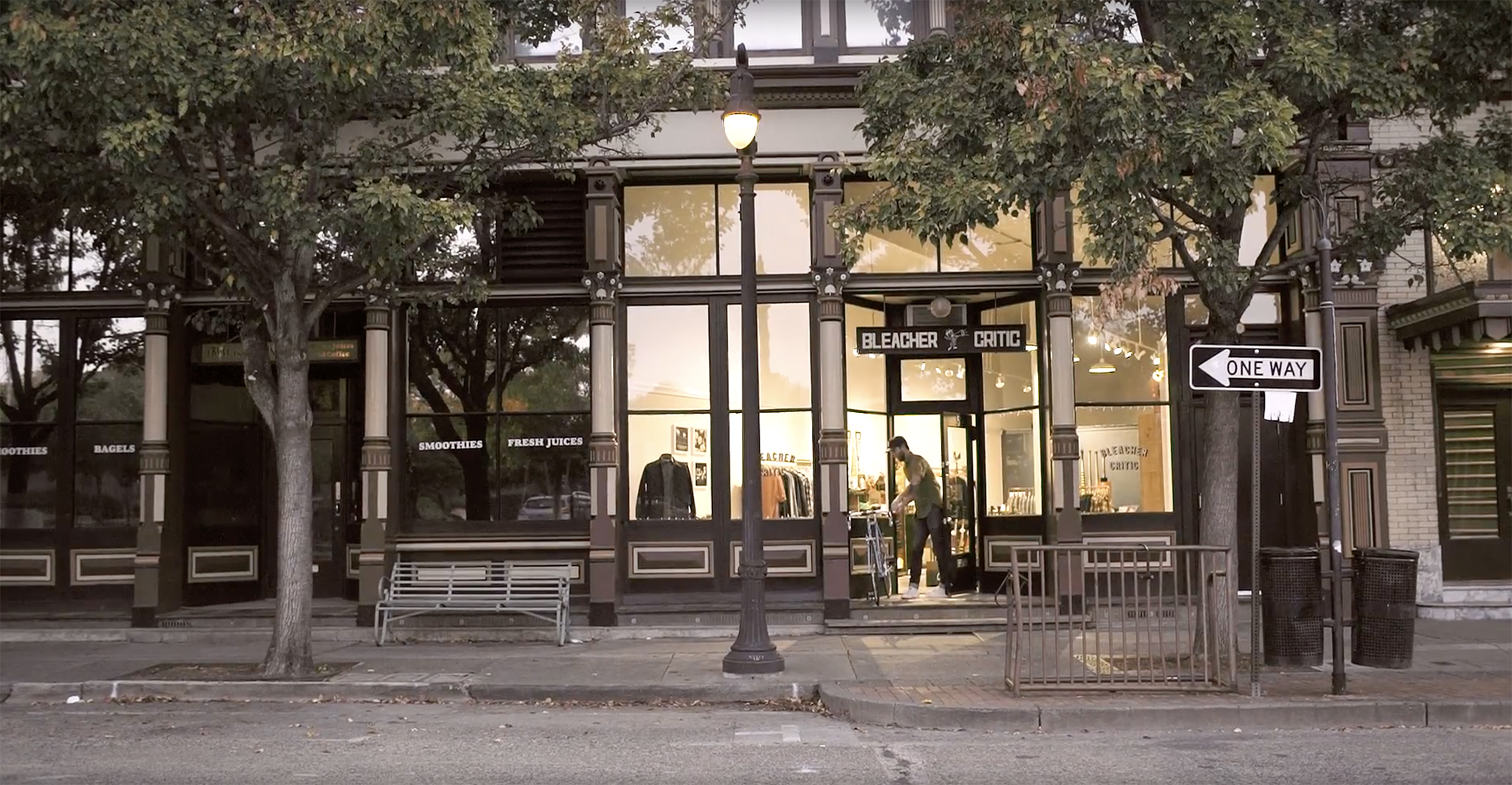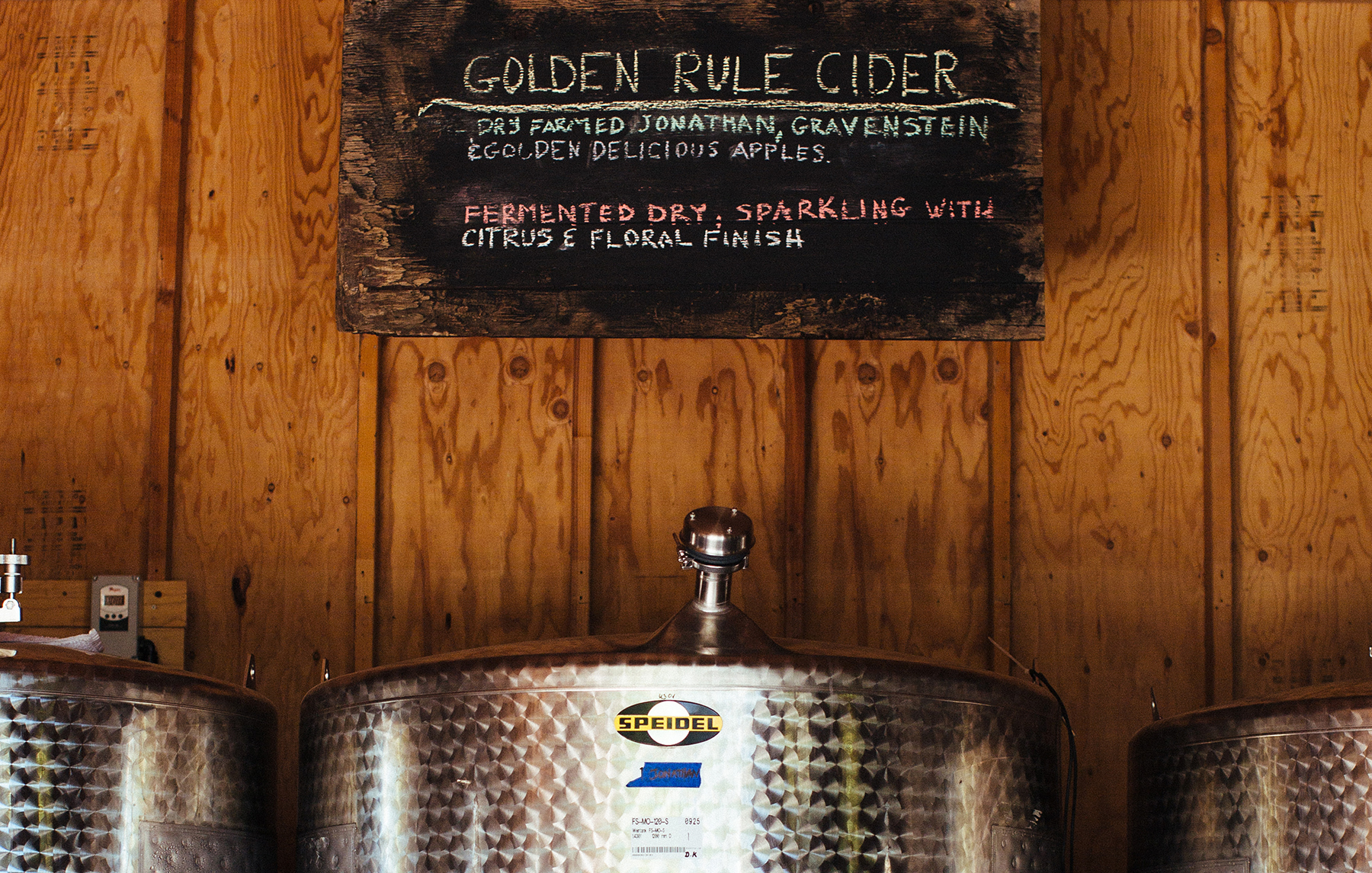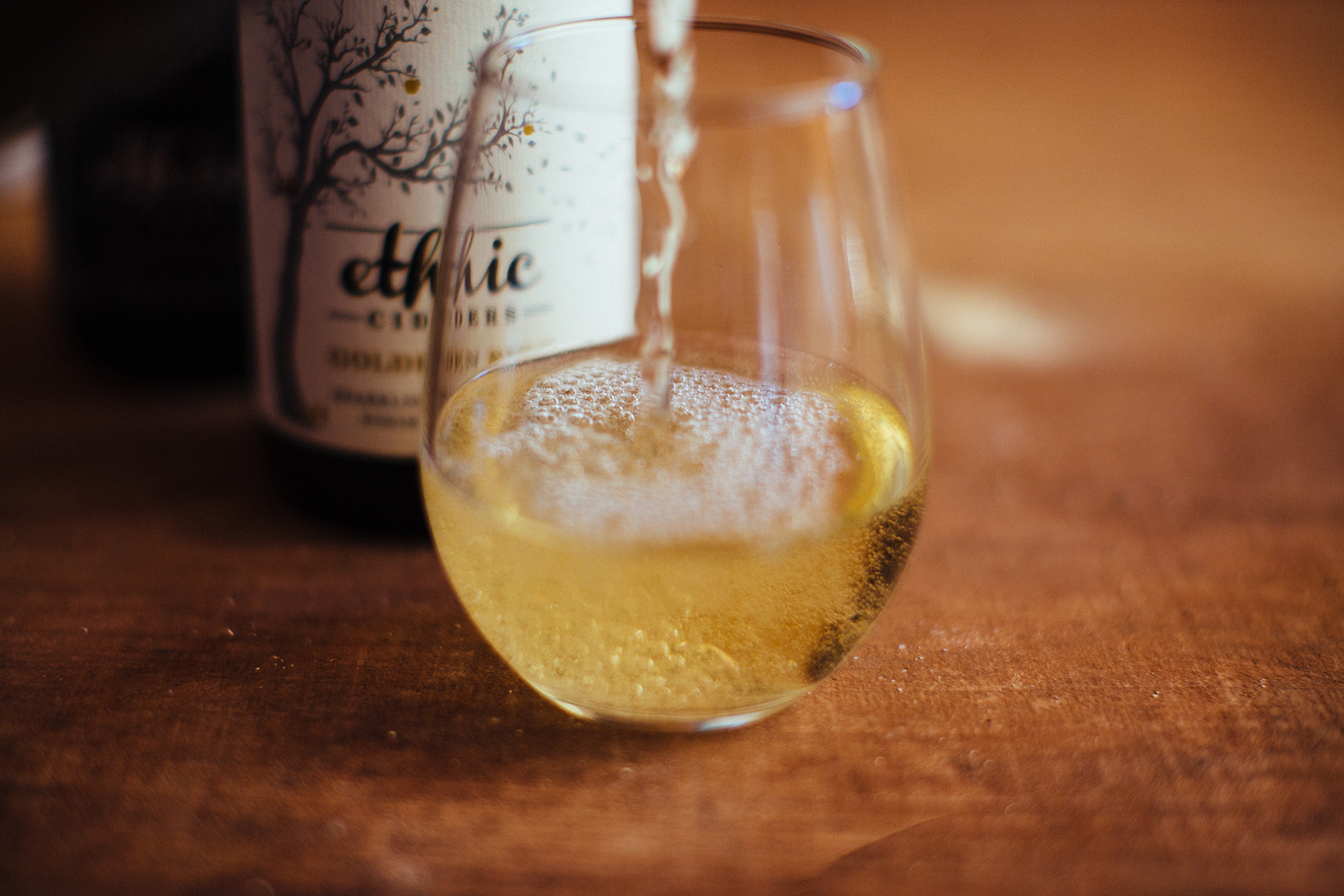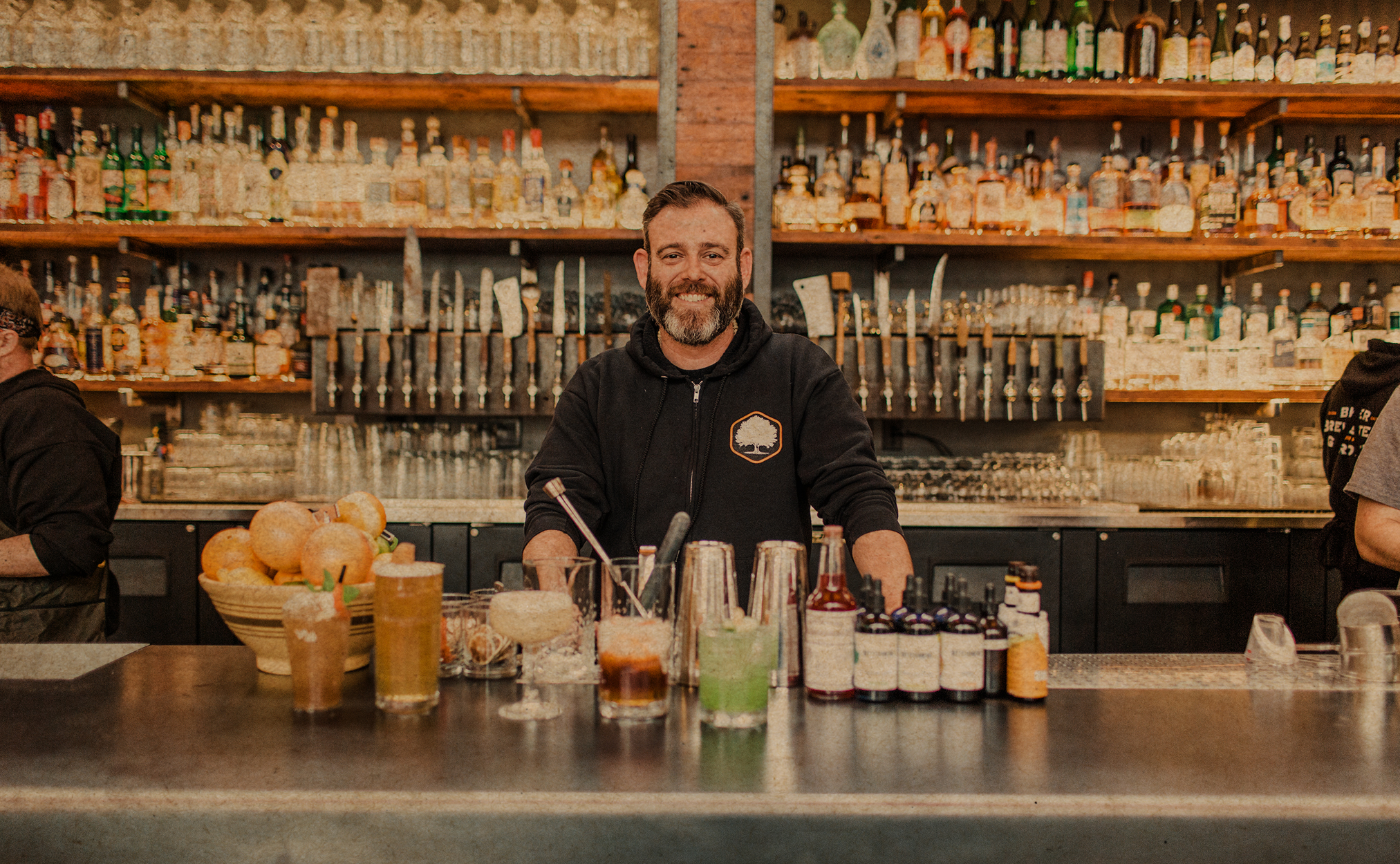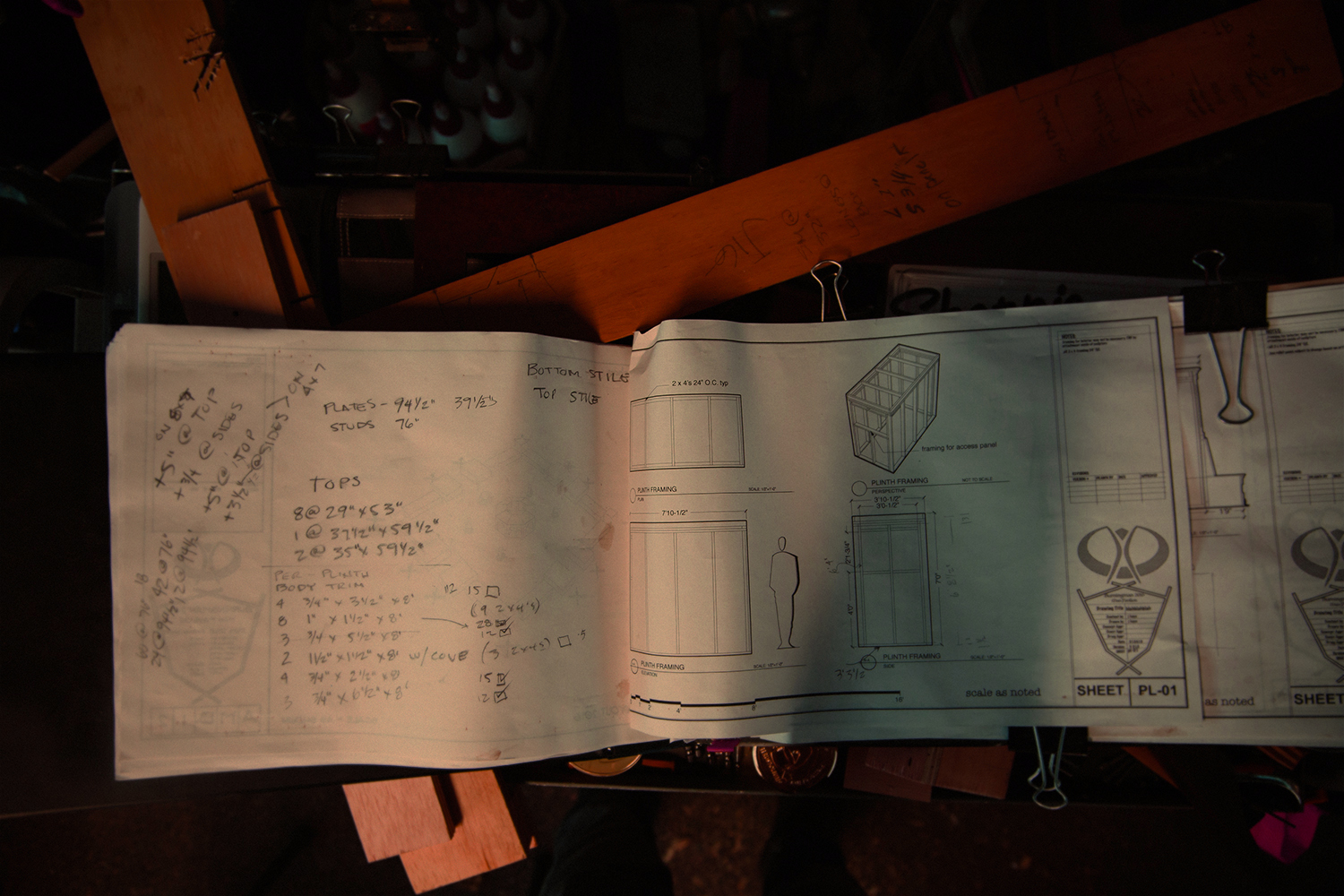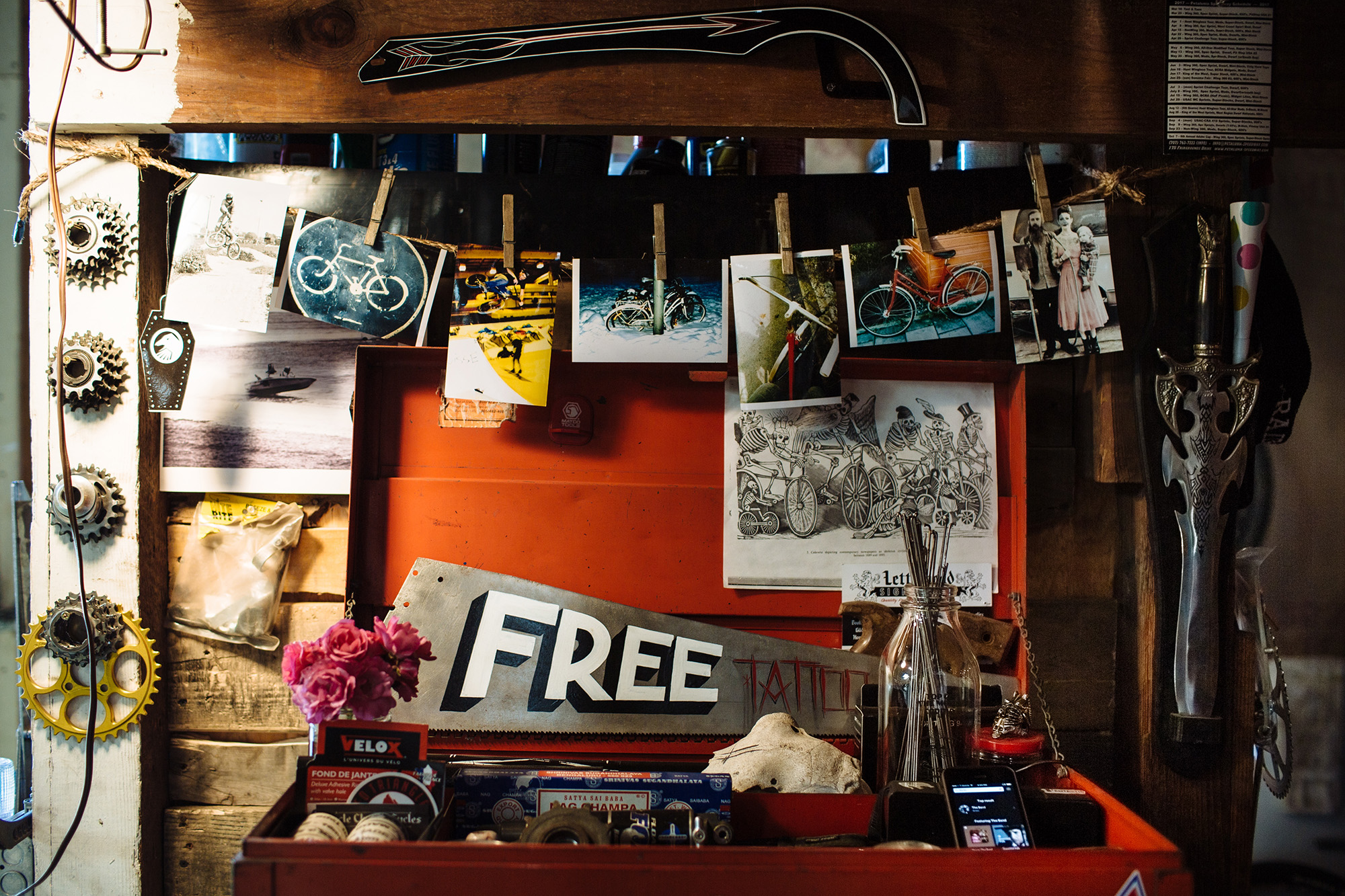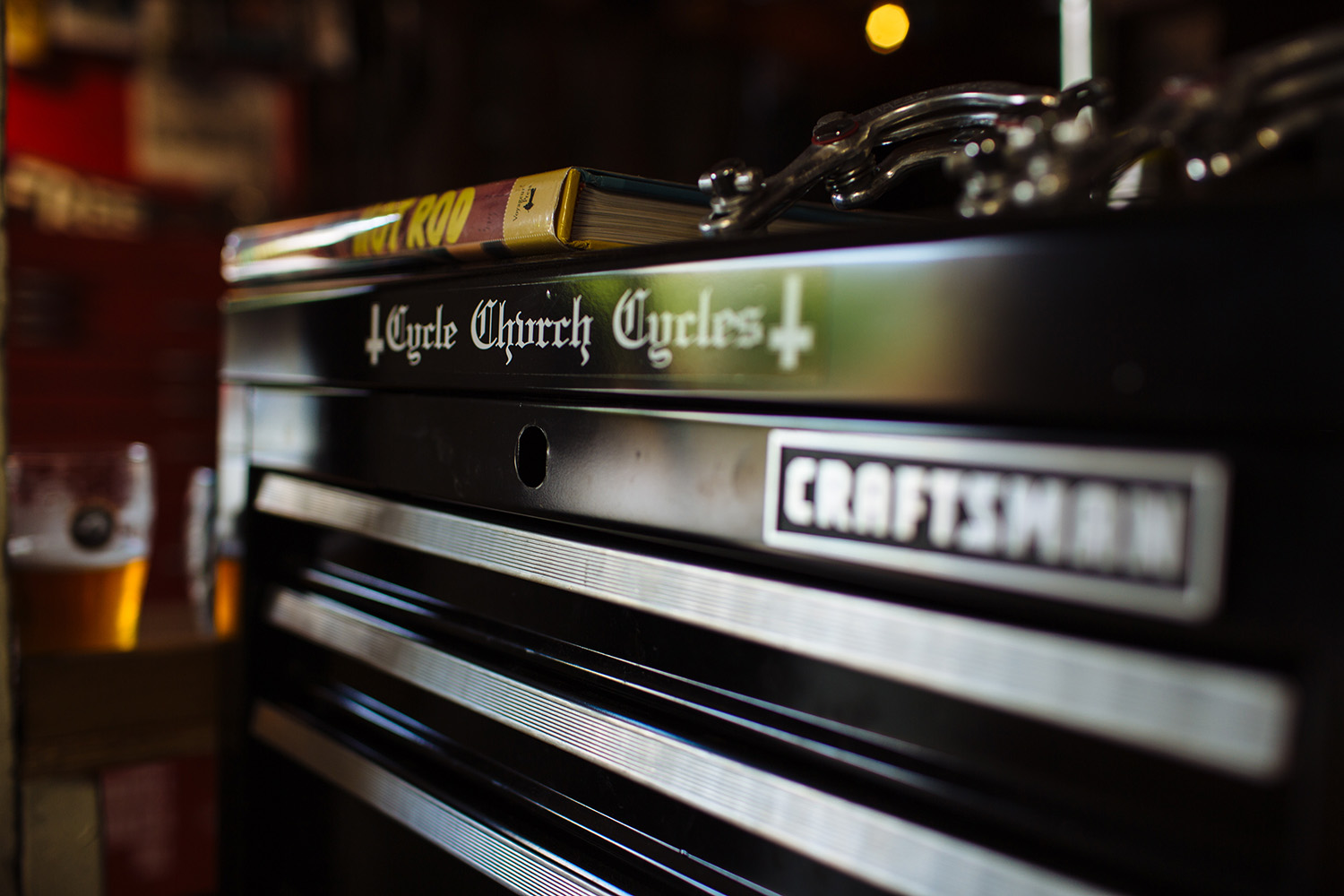Workspace: Dave Di Falco
David di Falco fixes transportation related obsolete machinery, the majority of which are vintage automobiles of one kind or another. Predictably, he has been doing this since he was a child, tinkering with childhood toys to make them better. As a young teen he purchased an abandoned car in a neighbor’s driveway for $100, completely took it apart and put it back together again, selling it at a profit, and all before he had a driver’s license.
Today, di Falco is a West Petaluma fixture, tooling about in his vintage 1930 Ford Deluxe Roadster, and walking his Boston Terrier about his Oak Hill neighborhood.
Photography by Michael Woolsey
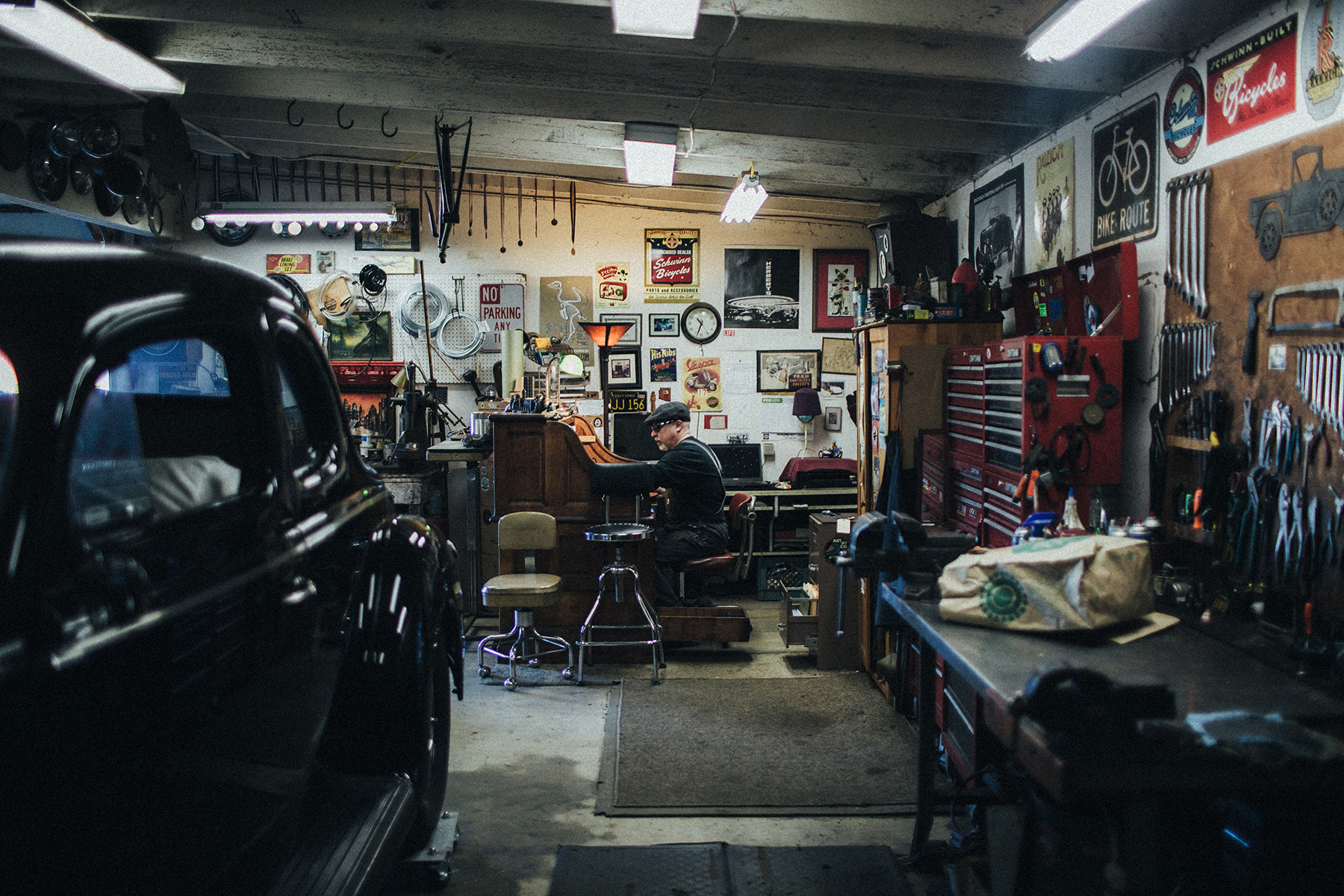
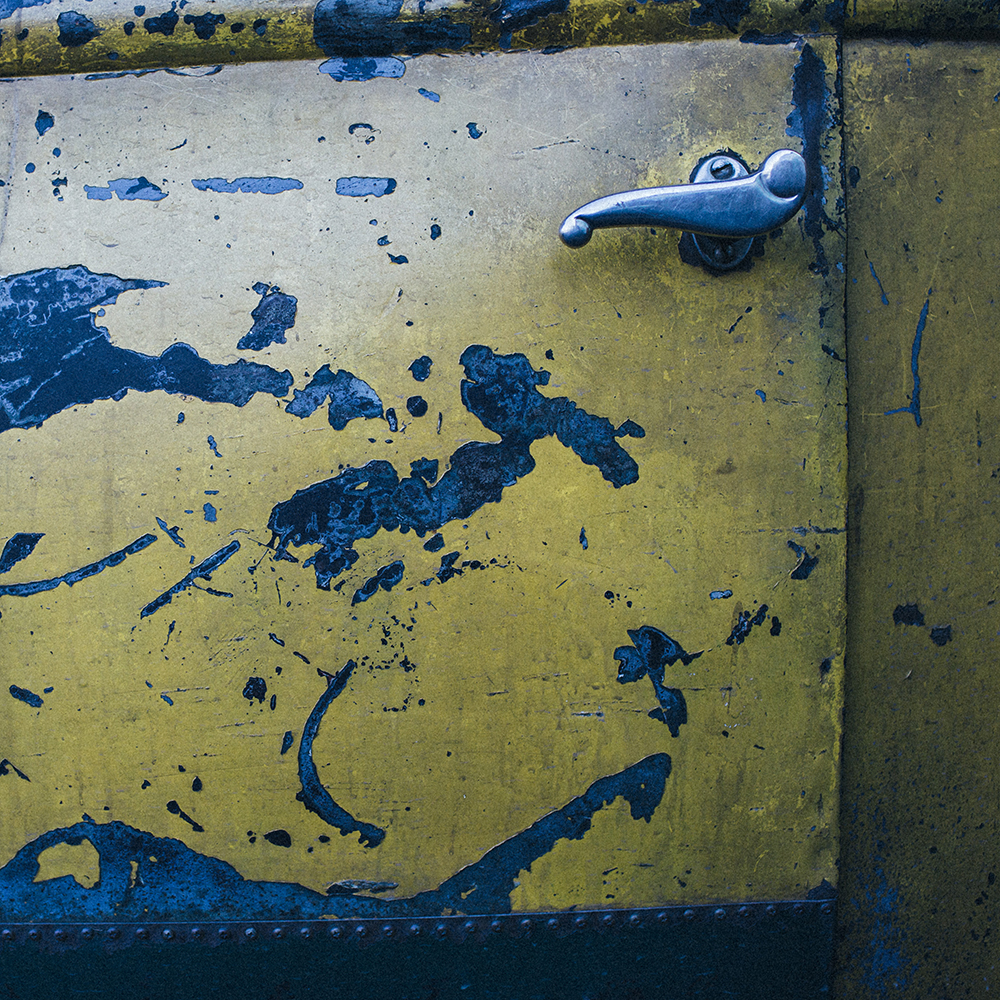
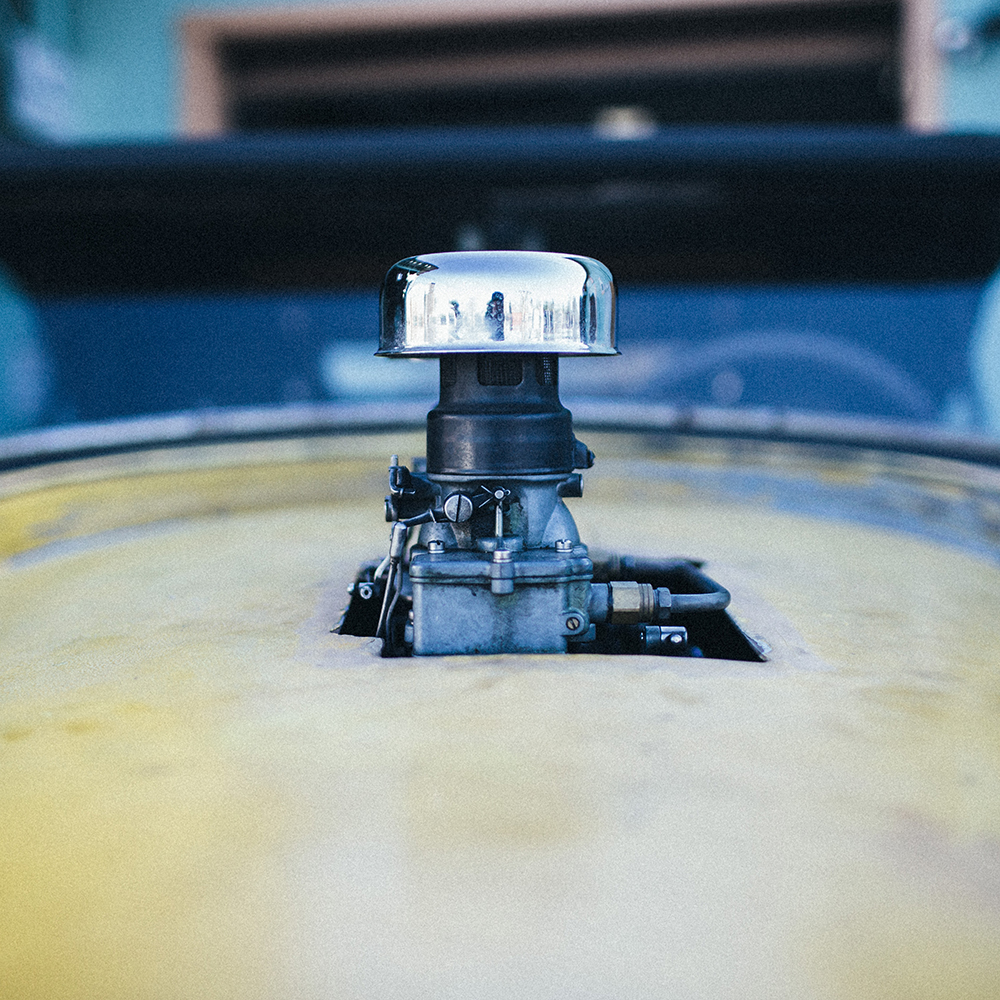
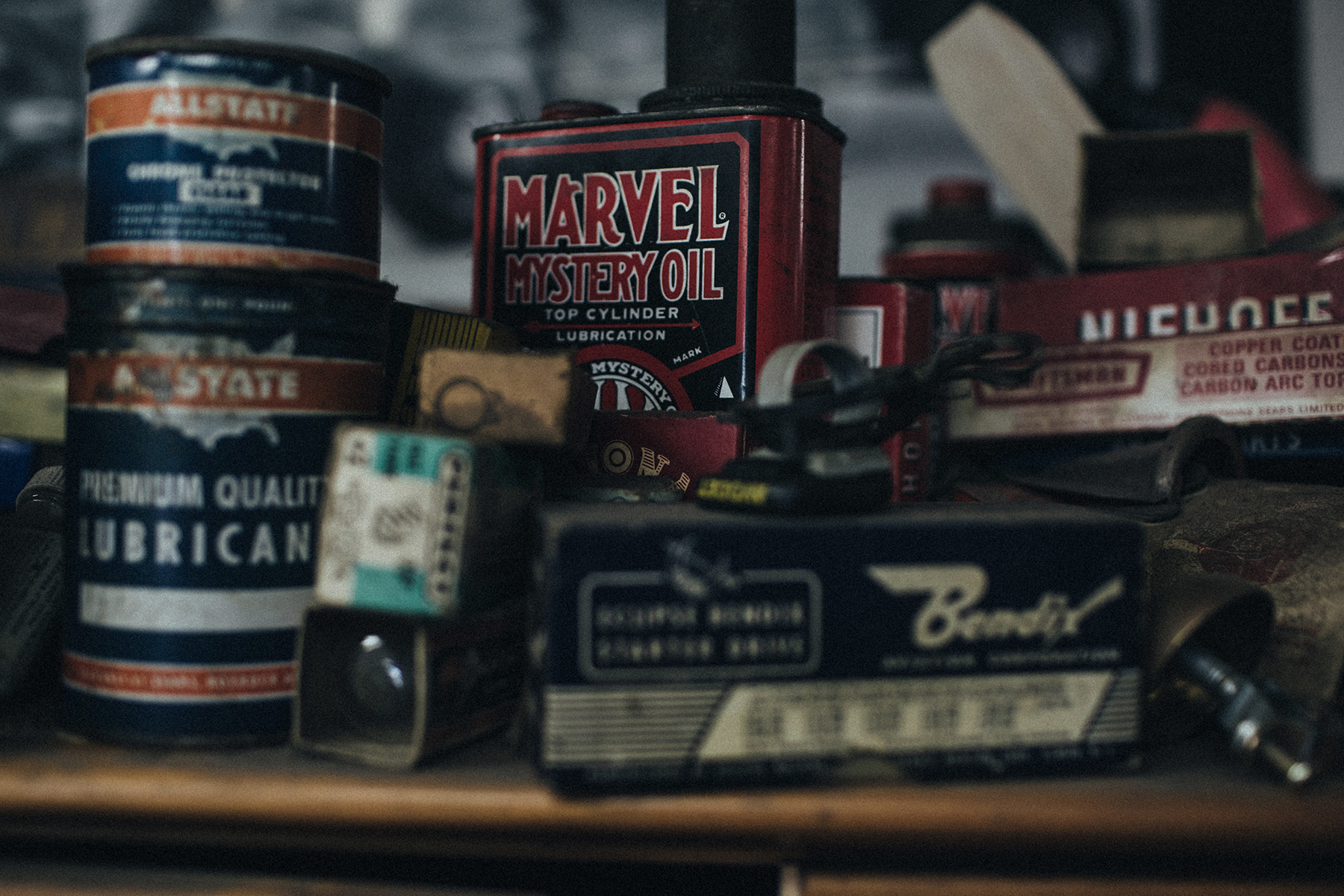
What he loves about Petaluma (where he has lived for close to 30 years) is that its size allows you to break through personal barriers more quickly; that friendliness and connectedness happens easily. David is quite friendly and if you see him, you should definitely say hello. A warm exchange is pretty much guaranteed. During a recent dog walk, he began counting the number of times people waved at him or said hello. He stopped at 12 after just a few blocks.
David is currently nursing back to health a 1940 Ford Deluxe Coupe and a 1935 Ford pick up truck.

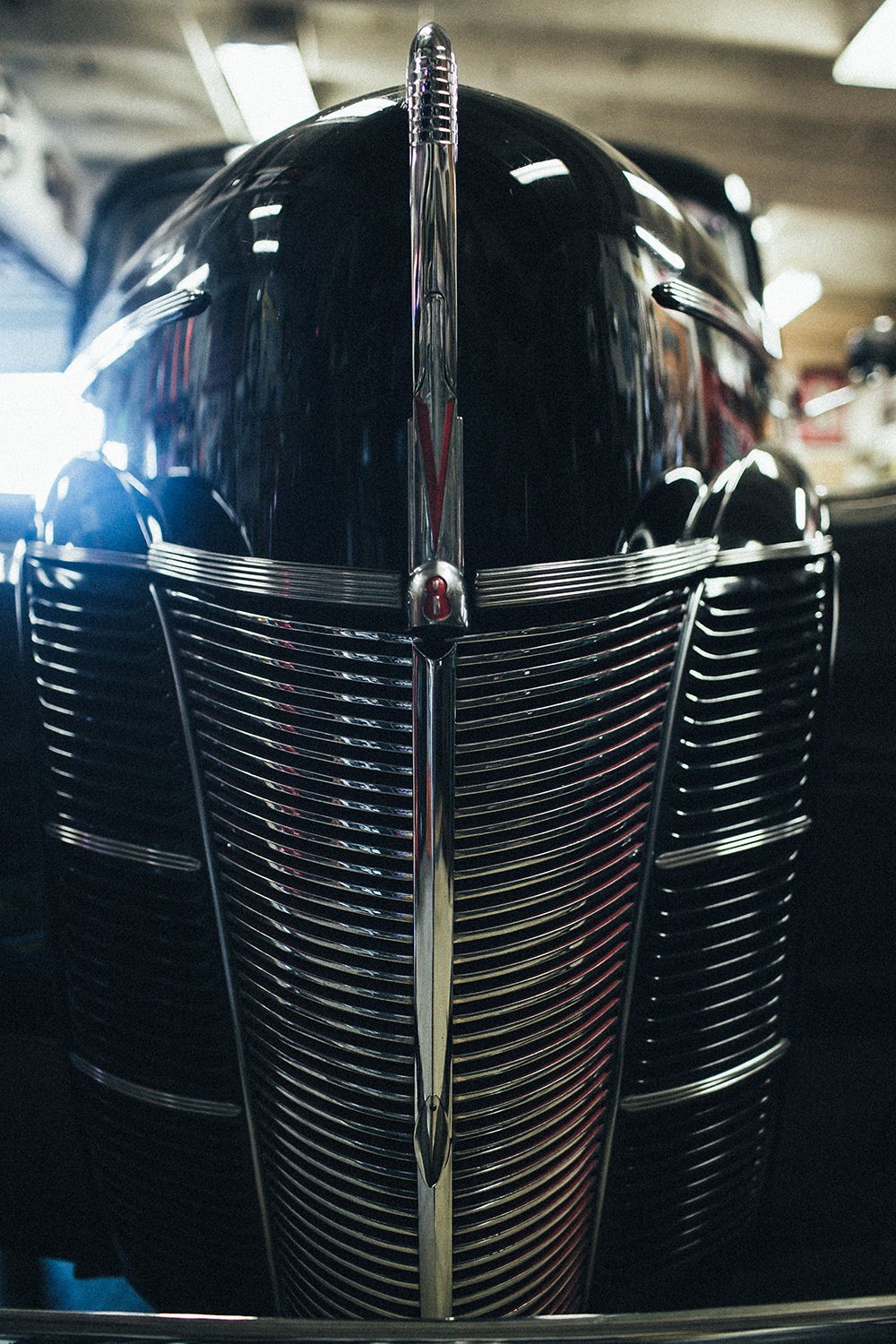
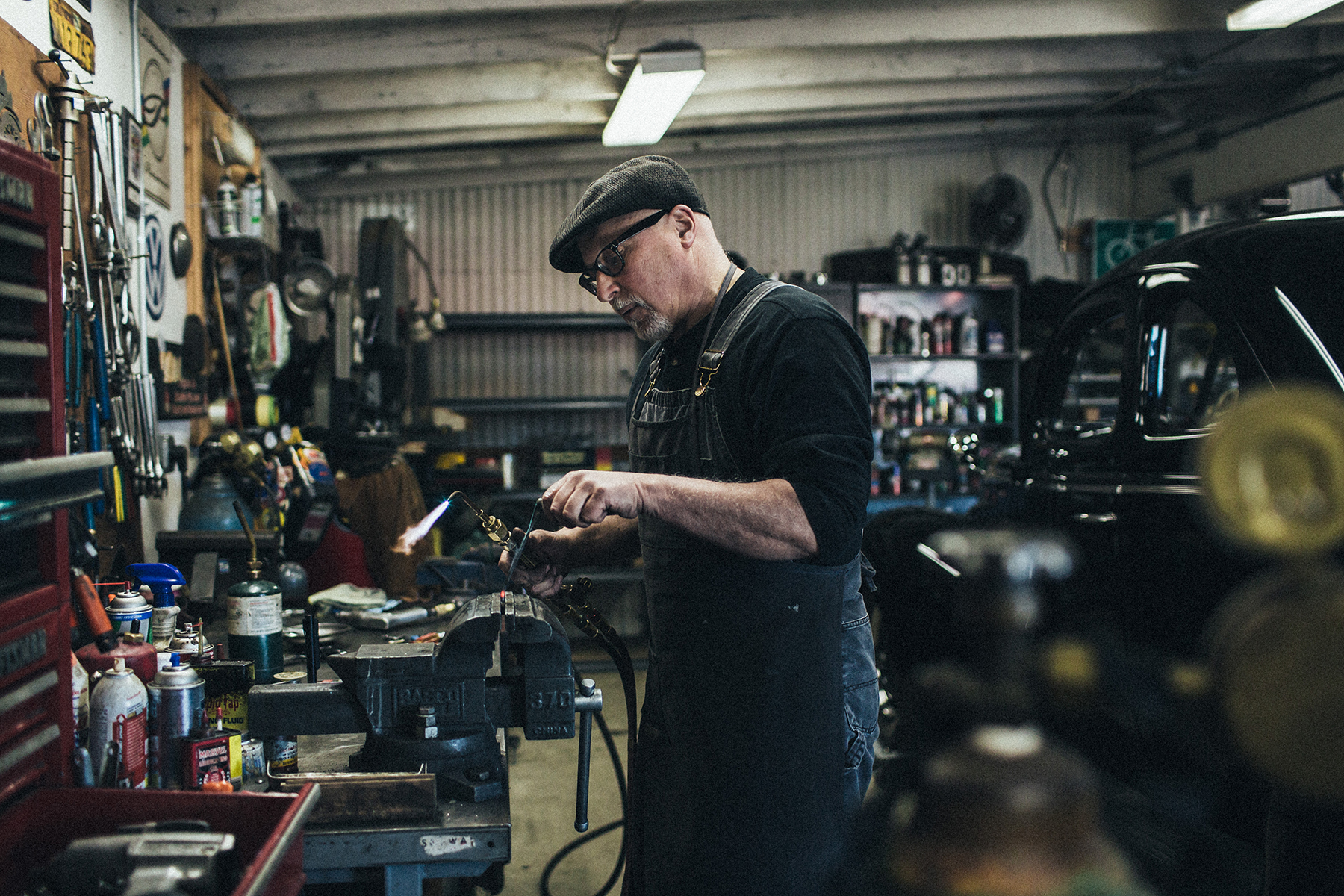
Cannot get other user media. API shut down by Instagram. Sorry. Display only your media.
Bleacher Critic captured by Field
Michael Woolsey captured the day at one of Petalumas cultural newcomers, Bleacher Critic.
Cannot get other user media. API shut down by Instagram. Sorry. Display only your media.

The Golden Stone
Welcome to our Sonoma County version of a colonial era American favorite, the Stone Fence. Here in the West, we don’t have a lot of fences made of stones, but in New England, that’s a different fencing story. The Stone Fence is a classic combination of hard liquor and hard cider. (According to legend, the Green Mountain Boys’ 1775 raid on Fort Ticonderoga, one of the opening salvos of the Revolutionary War, came after a night full of Stone Fences.)
Our version is all Sonoma County, no redcoats in sight, and concocted with Ethic’s Golden Rule Sparkling Cider and Griffo Distillery’s Stony Point Whiskey. Add a dose of Monarch Bitters, some Meyer lemon juice and simple syrup, and there you have it: The Golden Stone.
A crisp version of the classic holiday mulled cider, It’s the perfect winter drink to insulate the imbiber from any kind of holiday strife.
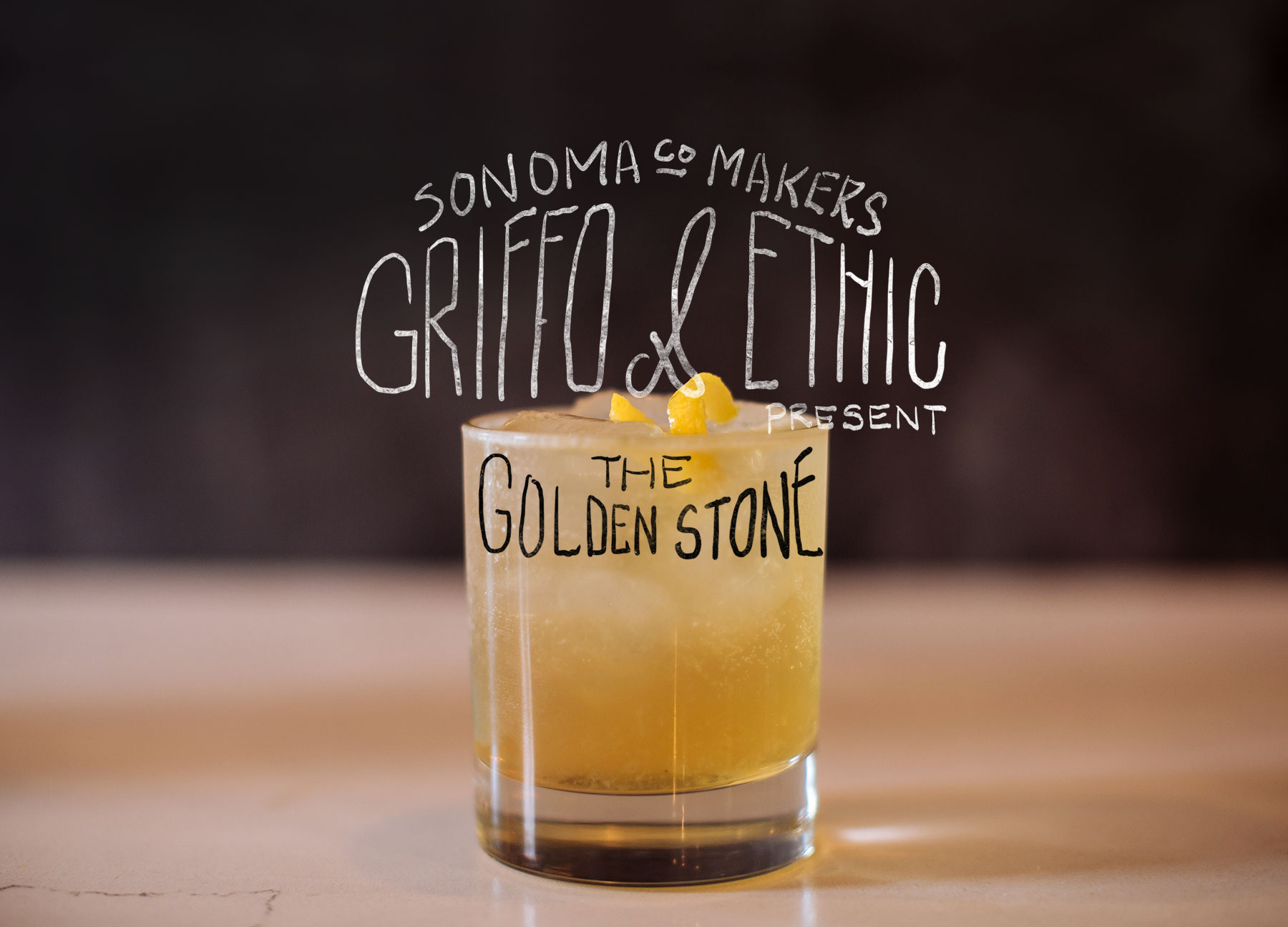
RECIPE
GOLDEN STONE
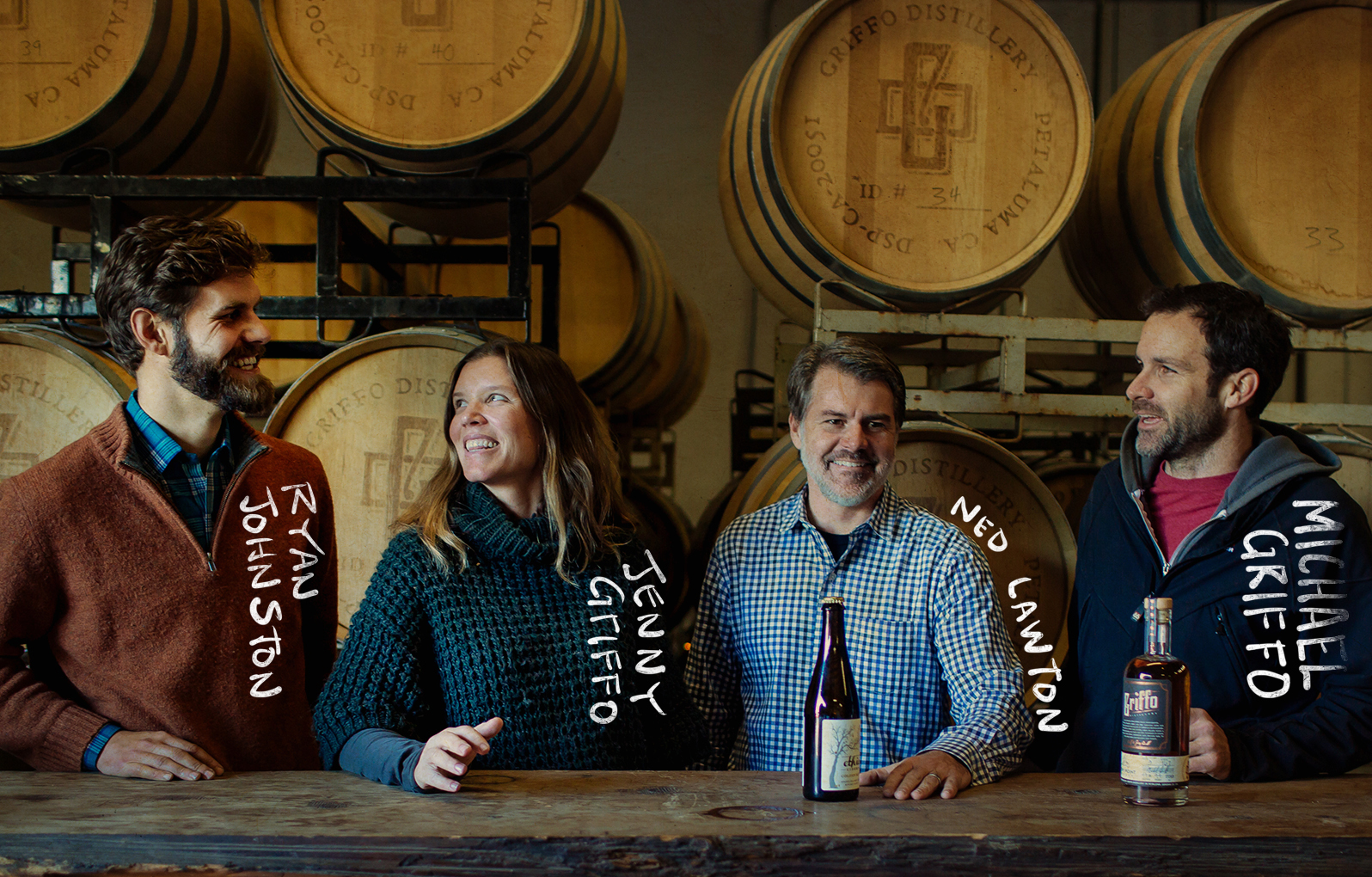
Workspace: Ned Lawton
Photography by Michael Woolsey



Experimenting with small cider batches in their barn sparked an even greater passion for cider and the apples that make it possible. This led the Lawtons to the Permaculture Skills Center in Sebastopol, where Ryan Johnston was a program director actively working with local community organizers and organic growers. Johnston had gathered over 60 varieties of apples to share with the community. Now Johnston is the orchardist and cider maker for Ethic Ciders.
Sani-T
Photography by Michael Woolsey he brains behind the idea: Tim Art Director: Tyler Young Tim Welch and Brendan Moylan, of [...]
The Ethics of Cider
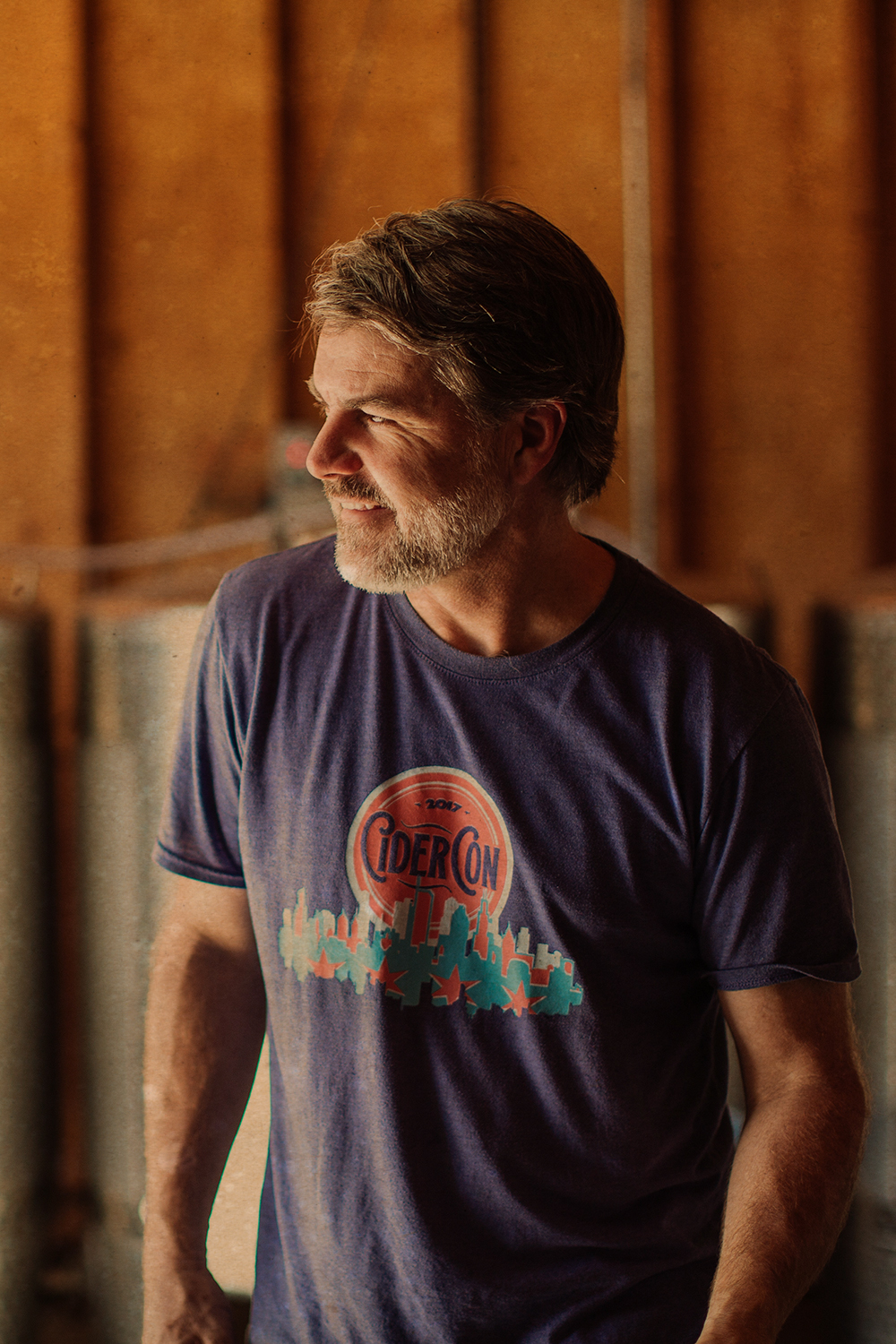


"It became crystal clear to us that cider had the potential to express the unique characteristics of our local fruit and also help preserve the regional apple heritage of Sebastopol."
Experimenting with small cider batches in their barn sparked an even greater passion for cider and the apples that make it possible. This led the Lawtons to the Permaculture Skills Center in Sebastopol, where Ryan Johnston was a program director actively working with local community organizers and organic growers. Johnston had gathered over 60 varieties of apples to share with the community. Now Johnston is the orchardist and cider maker for Ethic Ciders.
“Having grown up in West Sonoma County, Ryan brought a focus on regenerative agriculture and a strong connection with the local community,” Lawton says. “We bonded quickly over our passions for all things made of apple. Soon after, we began assessing the viability of building a cider business that was sustainable from both a farming perspective and also a financial perspective.”
Making quality cider is just one part of the Ethic Ciders philosophy. Lawton and his team are focused on connecting with people and keeping the area’s orchard traditions alive.
“When we think of community, we really see Ethic as a part of many communities that come together here in Sonoma County,” Lawton says. “It’s local farmers who grow the ingredients for great ciders. It’s our fellow cider, beer and wine makers that share the passion and techniques for creating amazing beverages with one another. And it’s the grass roots organizations like Slow Foods, Rare Fruit Growers, Farm Trails and many others that support local makers like us here in the county.”
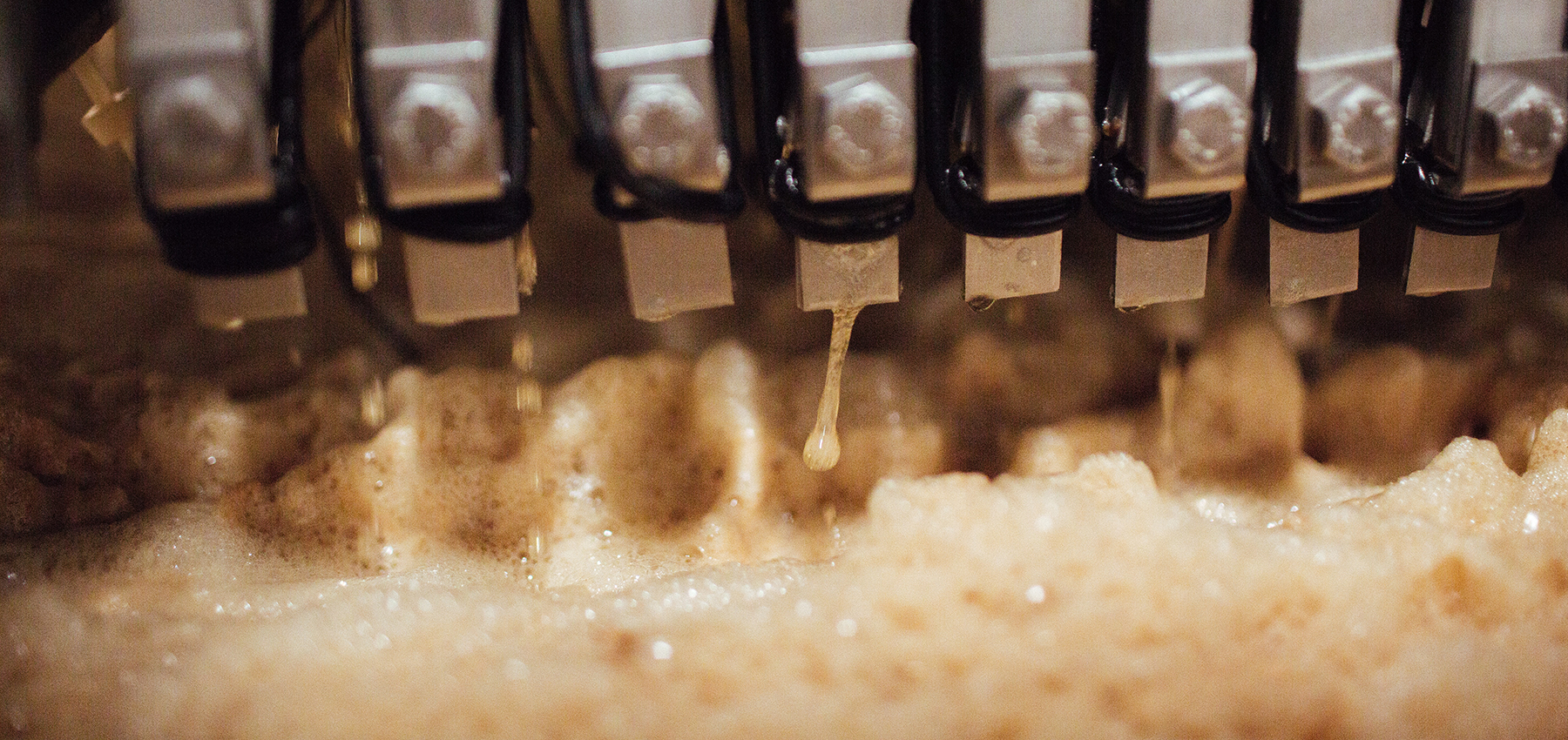
The name Ethic Ciders was inspired by Lawton and Johnston’s belief that “making top quality ciders comes from staying true to the fruit.” They start with the highest quality organic ingredients and then ferment slowly, stirring every day to preserve the apples’ delicate flavors and aromas. Every apple variety is fermented separately then blended after fermentation, to let the fruit’s unique character shine. Ethic uses local heirloom apple varieties such as Gravenstein, Johnathan, Golden Delicious and Rhode Island Greening apples along with wild berries and botanicals — all sustainably grown in Sonoma County. On their farm Ethic has also replanted a dozen varieties of traditional cider apples and the planting continues.
“Our goal is not year-to-year uniformity, it’s beauty and balance, which starts with ecological orchard management” Johnston says. “These practices are labor intensive and time consuming, but as makers it’s our way of respecting and ultimately celebrating a sense of place that expresses through flavor.”
Ethic’s ciders are available to ship direct to consumers in 36 states and sold at over a dozen local stores, including Whole Foods and and Oliver’s Market locations. And the company is growing … in a slow, deliberate way.
“Our growth plans are firmly rooted in the idea that we will continue to release ciders that are reflective of the local fruit and character of Sonoma County as well as working to have a tasting room at our farm in Sebastopol to further connect our community at large,” Lawton says.

Slings & Arrows
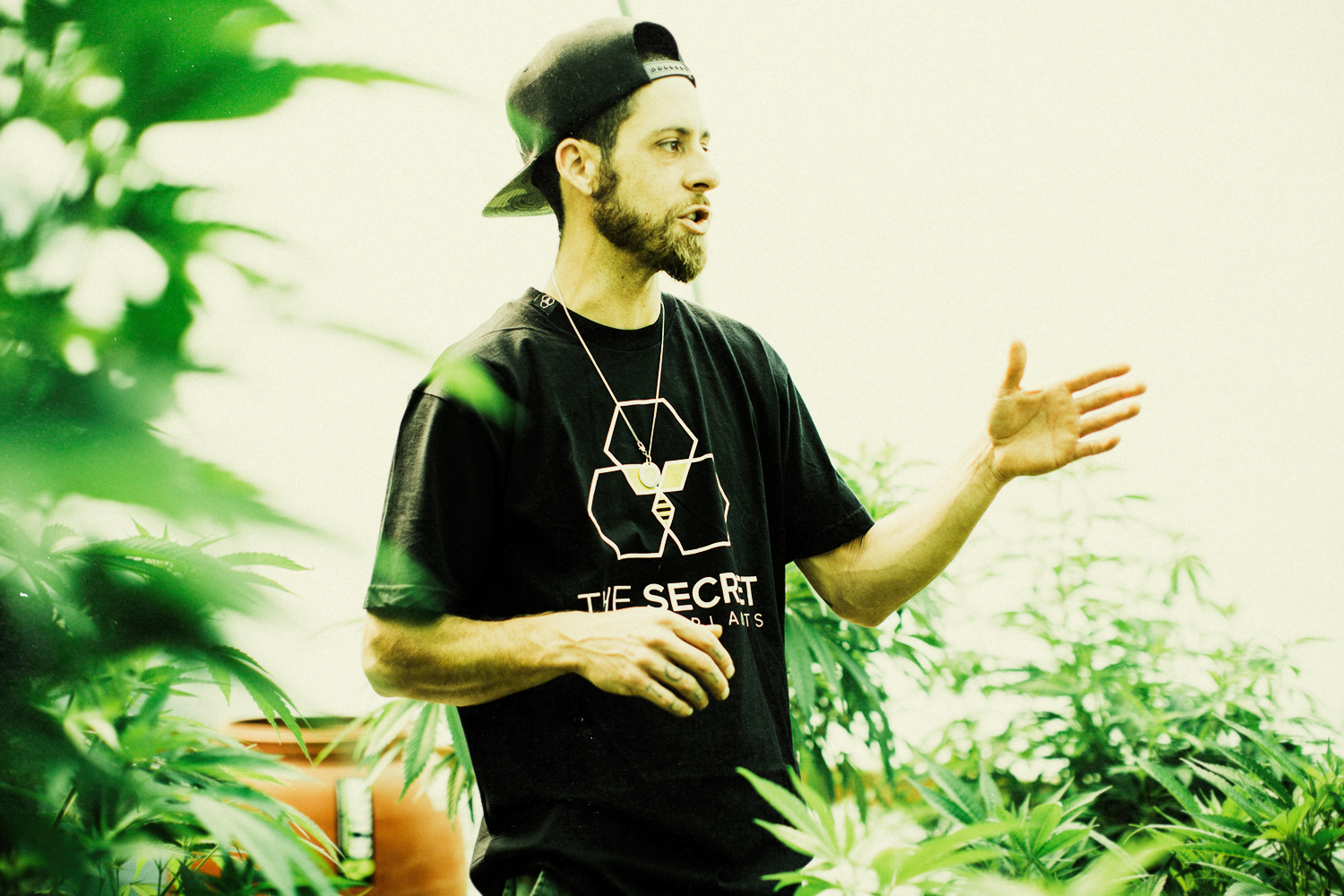
Fabian is a plant cultivator and geneticist by trade. He is also very much a farmer and faces the same issues any grower does of any sort of plant. He learned his craft, as he says in his own words, “from decades of failure.” But he also went to school for it, studying horticulture at Cabrillo Community College, where he got straight A’s. He is very appreciative of his formal education. Going through the Horticultural Program in Santa Cruz added the “science” to what he already knew.

Well, that comes from
poor judgement.”
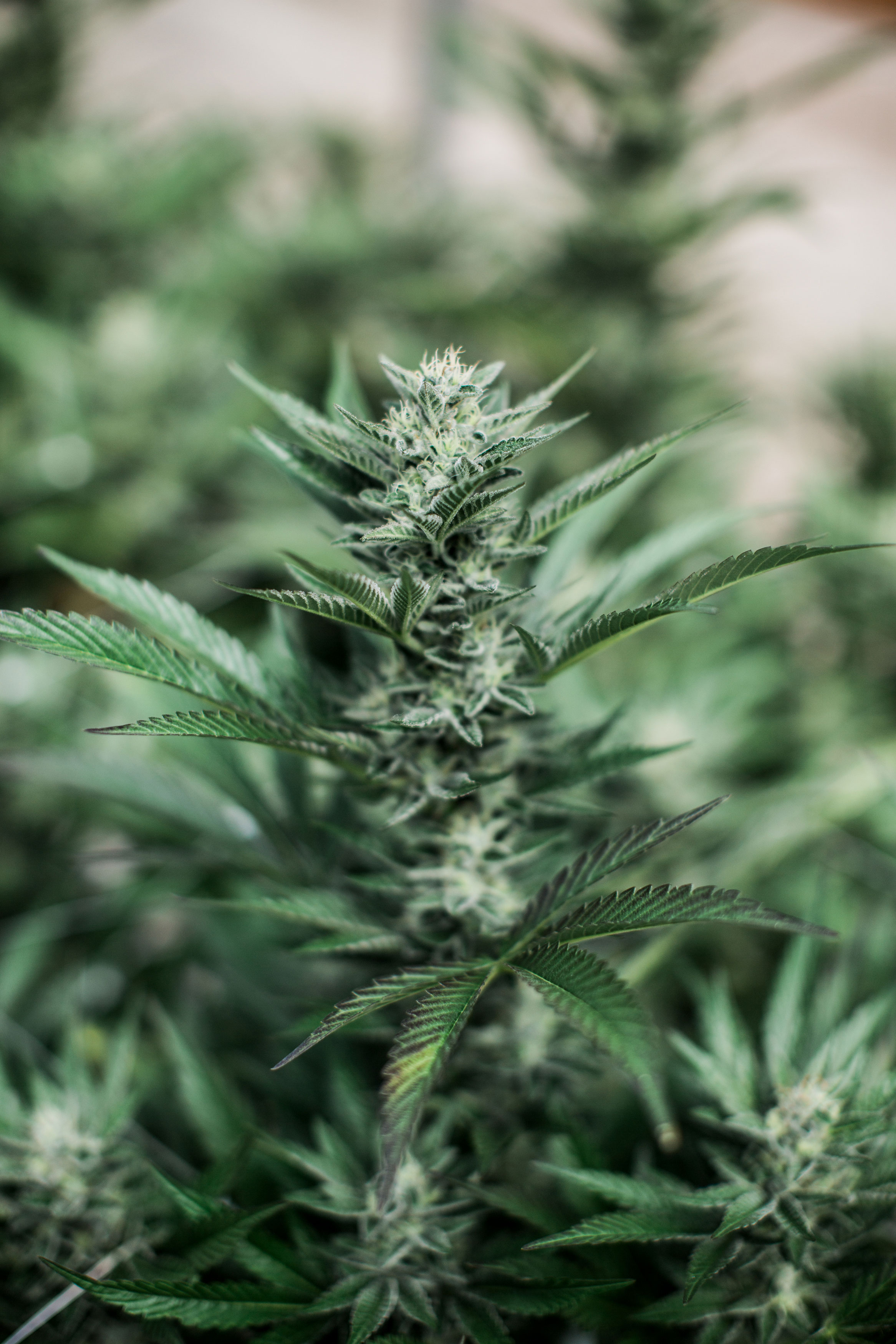

There are multiple breeding projects going on at Trinacria Gardens, which btw, can take years to perfect to Fabian’s satisfaction.
Enzo’s Kush/Hollister Kush These strains are cultivated especially for those suffering from PTSD, as he does. Particularly US Combat Vets. Fabian is developing a strain that not only helps calm night terrors and facial tics, but that can be easily cultivated by someone in a wheelchair or is otherwise physically disabled. Fabian donates seed, flower and oil to Veteran’s groups whenever possible.
Vendetta Viola/Purple Vendetta: Fabian is currently working to recreate this strain that, in his opinion, was ruined through years of commercialization by syndicates. This cultivar, commonly known as GDP (Grandaddy Purple) is well known to those that were in the industry early. He is attempting a new spin on this old classic grape flavored terpene by combining the classic purple haze and a selected newly bred strain from his farm. Fabian plans to start selling his new purple cultivar in 2018, which will make Trinacria Gardens GDP a project 4 1/2 years in the making.
Pineapple Pressure: The newest breeding project at Trinacria Gardens is of the Sativa genre. Fabian is combining an old emerald triangle classic known as Trainwreck with his Hollister Kush male, delivering an incredibly terpene rich cultivar saturated in smells of pineapples and citrus, for a race mental high that energizes the mind and body. Stabilizing this cultivar is his main focus over the next few seasons, due to the fact of Trainwreck’s notorious hermaphroditic tendencies, which carry over into new generations. He plans to deliver a genetically stable cultivar for the general public which could take multiple generations, selections and future pollinations. Again…it’s a long game.

The Cannabis Industry according to Fabian:
1) Big $: corporations lacking the heart and understanding of this sacred plant and the history that led us to where we are today. These are the people who bided their time for decades while the the grassroots farmers did all the heavy lifting toward legalization. Now they show up on the scene ready to rape and pillage the industry for profit, with no regard for patient health or well being.
2) Celebrity influence: this group also here to exponentially profit from the industry, having never germinated a seed or taken a single plant (let alone an entire crop) to harvest. Yet these people are somehow experts on the subject. Their high profile personas glorify drug use (prescription and narcotics). Nude women with pasties over their nipples, cannabis hosts perpetrating as activists and contaminated products are the norm. This segment of the industry continues to contribute to the lack of trustworthy people involved in the commercial side.
3) The General Consumer: blind to the politics and backhanded practices in the industry, they are motivated to purchase by marketing and advertising. This group is growing in numbers as cannabis becomes more mainstream, and are the main purchasing power for dispensaries, however blind they may be to the quality of the product they are buying.
4) Grass Roots: the last 2% of the industry is the authentic grass roots, farmers, breeders, and martyrs of our sacred plant; men and women who are continually pushing the industry in a positive forward direction while still honoring the legacy of the California Cannabis movement (which inspired the rest of the US) and the countless lives of dying aids patients in San Francisco who passed away so this industry’s roots could be sprouted. These are legitimate makers, crafting products from a place of educated dedication and passion for the plant.
Fabian’s Sicilian family heritage plays a large role in his life and work. (Trinacria is the symbol of Sicily and is on the Sicilian flag.) His family provides him the compass by which he steers his life today, including personal relationships and his business. Talk to him, and you will immediately know this guy is a straight shooter. He means what he says, means only well in all he does, and you will believe that he will do what he says he will do.
If you ask him what his differentiator is he answers easily: ethics. Running an ethical business is his strongest value. During his ten years in the industry, Fabian has witnessed repeated episodes of unethical practices. He has little patience for it and steers clear of it at all costs. Living life by a code of ethics toward the people around you is his way both personally and professionally.
Fabian is grateful for what he has today and for what he can do for people through medicinal cannabis. “I have things and people in my life today that I frankly don’t deserve, but by the Grace of God, I have them. I am so grateful for that.”
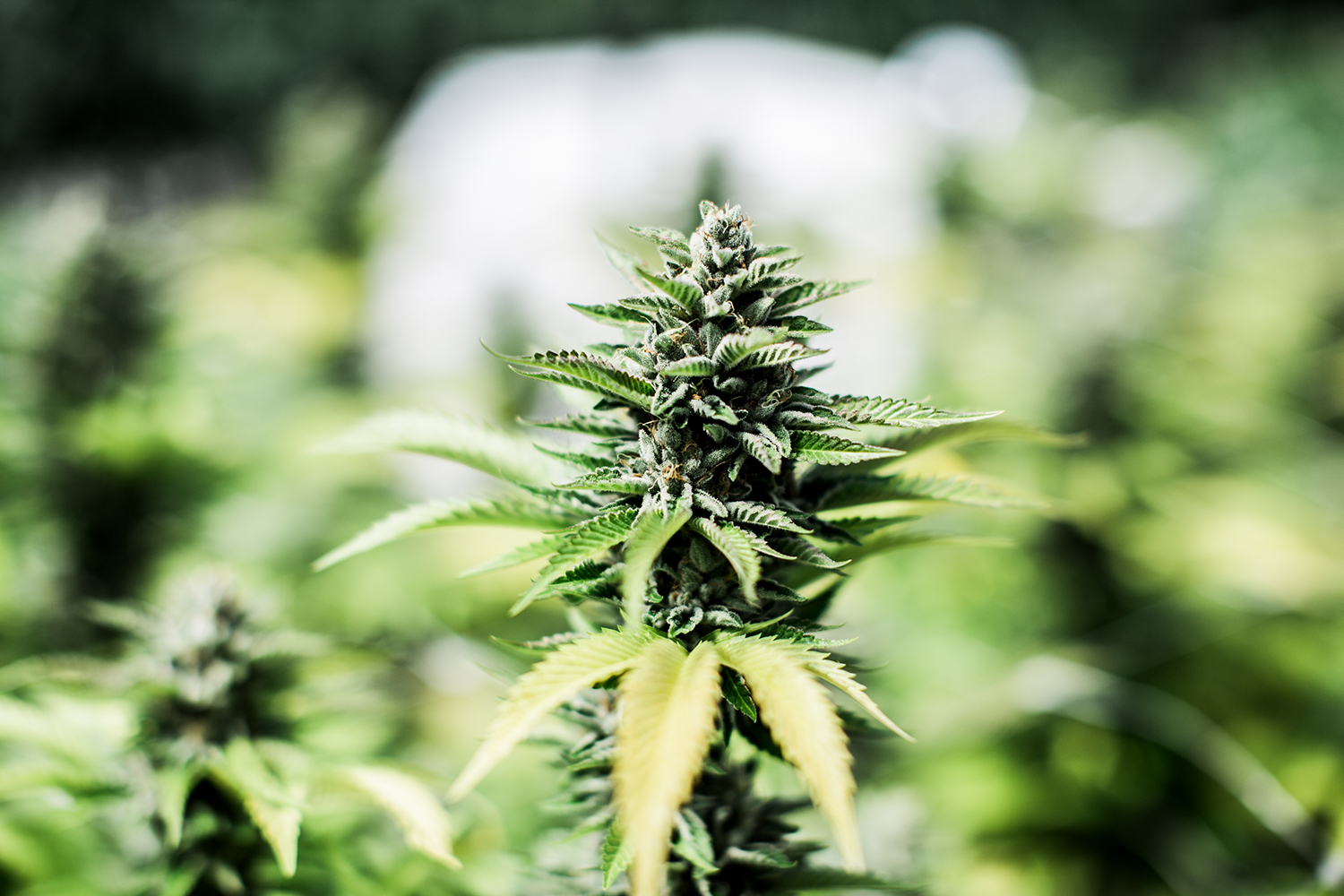
Visit Trinacria on IG
Cannot get other user media. API shut down by Instagram. Sorry. Display only your media.
Brewsters Gardener
Photography by Laura Schneider
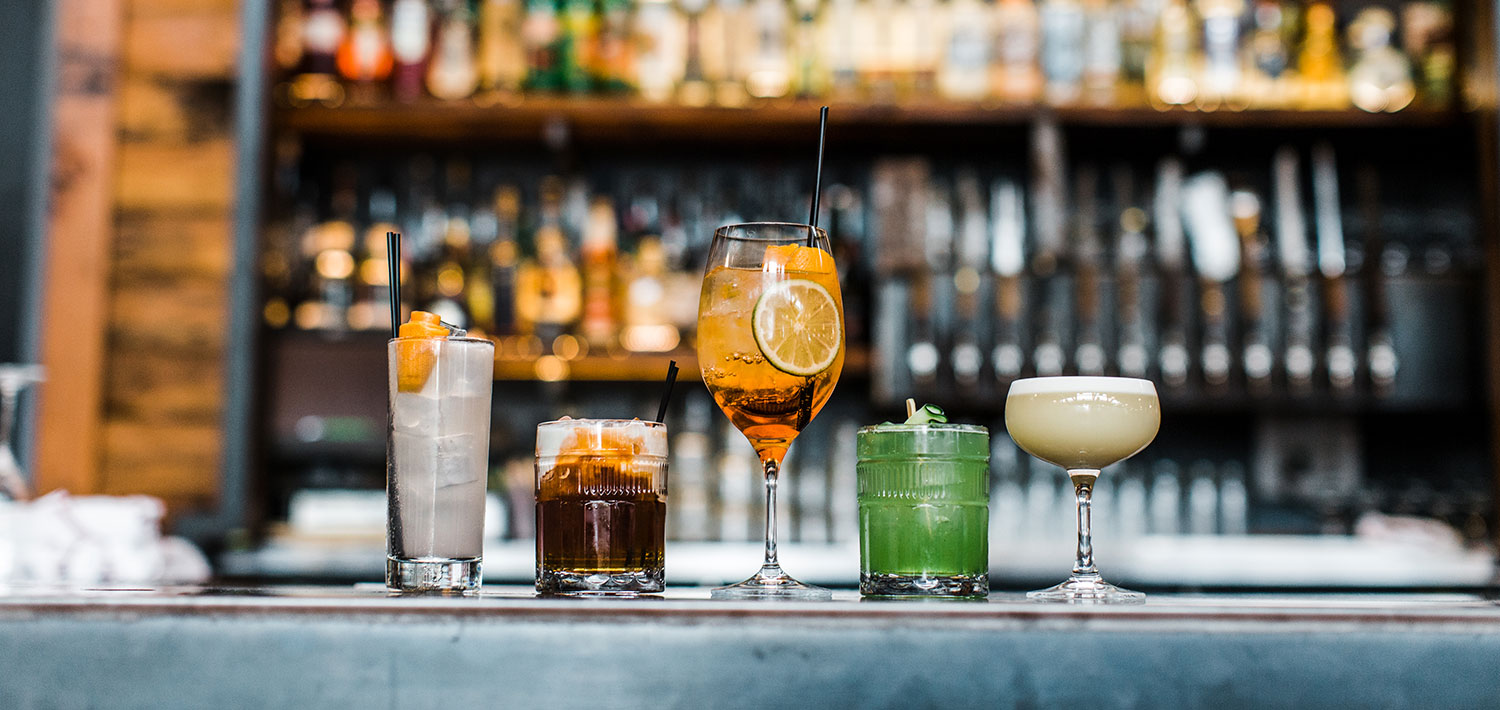

for me is all about
atmospherics, i.e.
a hot day requires
Margaritas, a hangover
requires a properly-made
Bloody Mary bristling
with pickles, and a night
out on a lovely date
requires a Martini
to kick things off.
Field: What does your job as Beverage Director entail?
Alfie: The Beverage Director sets the tone for all aspects of beverage service in the restaurant, and determines ongoing strategy for how the bar presents its beverage offering. Everything from how we make cocktails to how kids get apple juice falls under their purview. The Beverage Director role is typically a job that exists at larger hospitality venues such as hotels, or restaurant groups with multiple locations. Since Brewsters is just large enough to merit the role, this position exists as separate from the Bar Manager, whose responsibilities are more tactical in nature. So much is changing in craft beer right now, and because I wanted the ability to create a beer program that is deeply connected to the breweries producing the beer, I designed the Beverage Director position to allow for precise focus on building relationships with the brewers and salespeople. This focus results in a level of product knowledge that I feel is essential to running a restaurant passionately dedicated to craft beer. Being able to expose the public to the deeper levels of beermaking and its extremely rooted connection to humankind is really important to me.
Field: How is my cocktail experience going to be different at Brewsters vs. other local establishments?
Alfie: Without denigrating any other local establishments I would say that first and foremost at Brewsters is hospitality. To avoid digressing into an essay on the subject, suffice to say that being kind and welcoming to people who want to hang with us is the most important element of what we do. It matters little how cool our drinks are if we’re not courteous and fun to be around.
I’m also not sure that I can answer that without first talking about the vast, and sometimes extremely righteous differences between the bars that exist up here. Not all bars are cocktail driven in the way that “craft” cocktail spaces are, but still offer cocktails. Some bars don’t really go past mixed drinks. And that’s fine. It’s exactly as it should be. I love a good dive bar and I usually don’t order a Manhattan when I’m there. That said, there are plenty of dives that have old-school ownership or mentality, and you’ll get a good Manhattan. It’ll likely have a bright red cherry in it, which is awesome in that setting. The bar at Brewsters is a restaurant bar that is firmly set in the world of craft cocktail culture. We don’t carry any products in the bar that don’t meet my criteria for integrity in ingredients, so I would also expect to find analogs of your favorite mass-produced soda, mixers, etc. I believe this makes for better drinking. Better for you, almost always better for the Earth. We are essentially dedicated to crafting a beverage that pleases and delights you, and flavor is the ultimate arbiter. In this regard, quality of ingredients and process are paramount.
The bar at Brewsters has a unique presence in the mind of the guest because of our focus on beer, but our kitchen is every bit the focus of what we do here as is the bar. Most guests eat while they’re with us, so at Brewsters I would expect an elevated beer/cocktail/food offering with a concise array of excellent products to choose from, and an amiable, fun hospitality experience.
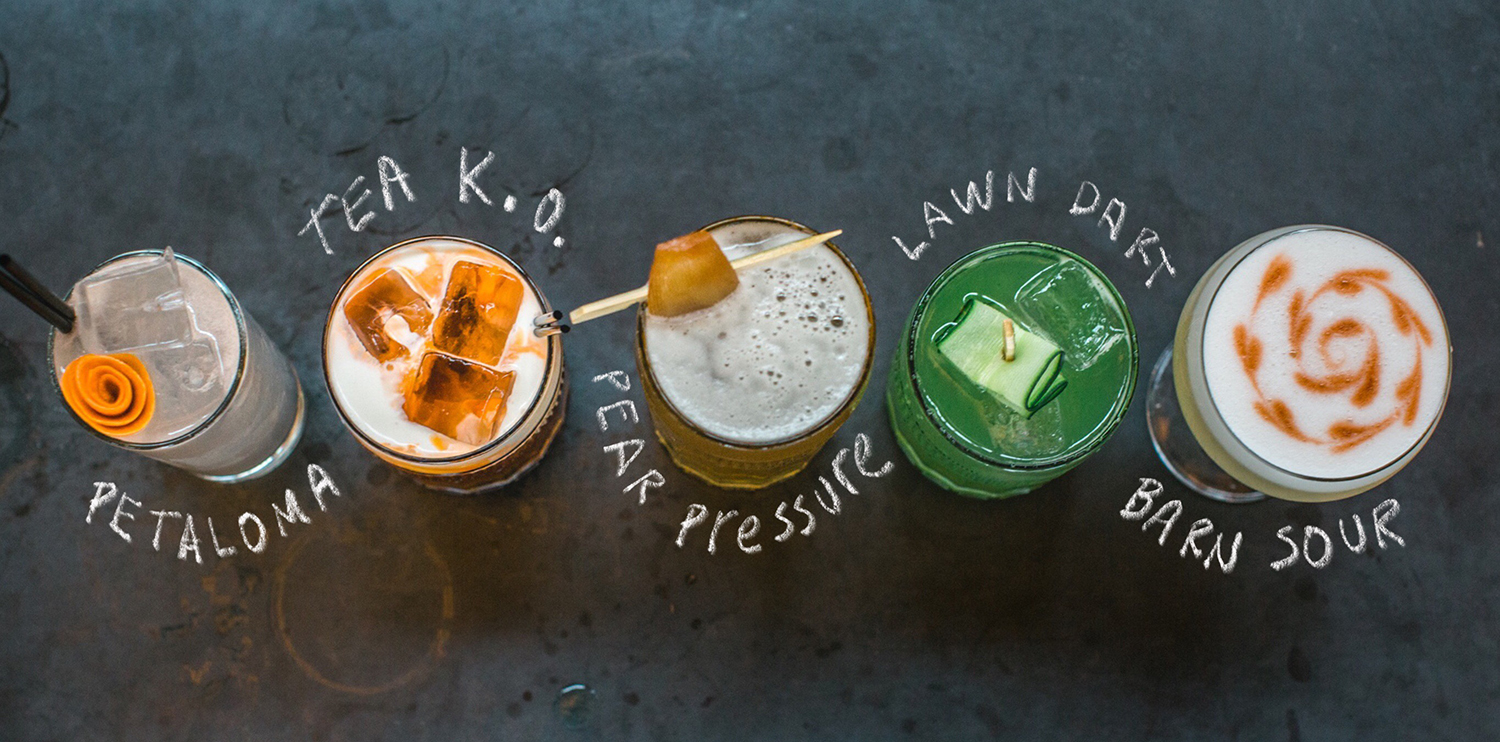
Field: How would you describe the atmosphere at the bar itself? Is there anything surprising you?
Alfie: On the weekends it’s raucous and busy. The sheer volume we do makes for an environment of controlled chaos that can be tremendously fun, given how buttoned-up many people have to be during the week. We’re a family joint so we’re not talking Viking-level partying, but there is a lot of toasting and laughing going on. The number of people we serve on Saturdays has been surprising. Certainly unprecedented in my personal experience. We’ve ranged from 1500-2500 people on any given sunny Saturday, which is mind-boggling.
Field: What are your favorite cocktails to feature and why?
Alfie: I love helping people rediscover classic drinks. From a well-made margarita, to (Trader) Vic Bergeron’s original Mai-Tai recipe, there are so many drinks that have been adulterated or modified so much as to be unrecognizable related to their original composition, the Mai-Tai being a superlative example. The promulgation of these classic recipes helps ground what we do in past eras of bar goodness. I also love making people a Bronx, a gin drink with sweet and dry vermouth and orange juice. I like thinking about a time when something as mundane as oranges were seasonal and fancy.
Field: I think many people find the whole whiskey/bourbon genre intimidating. For someone wanting to give this genre a try, what would you suggest as an easy entry drink?
Alfie: Too easy. A properly made Old Fashioned will undoubtedly turn someone into a whiskey lover. If not, then I’m afraid there’s nothing that can be done for them.
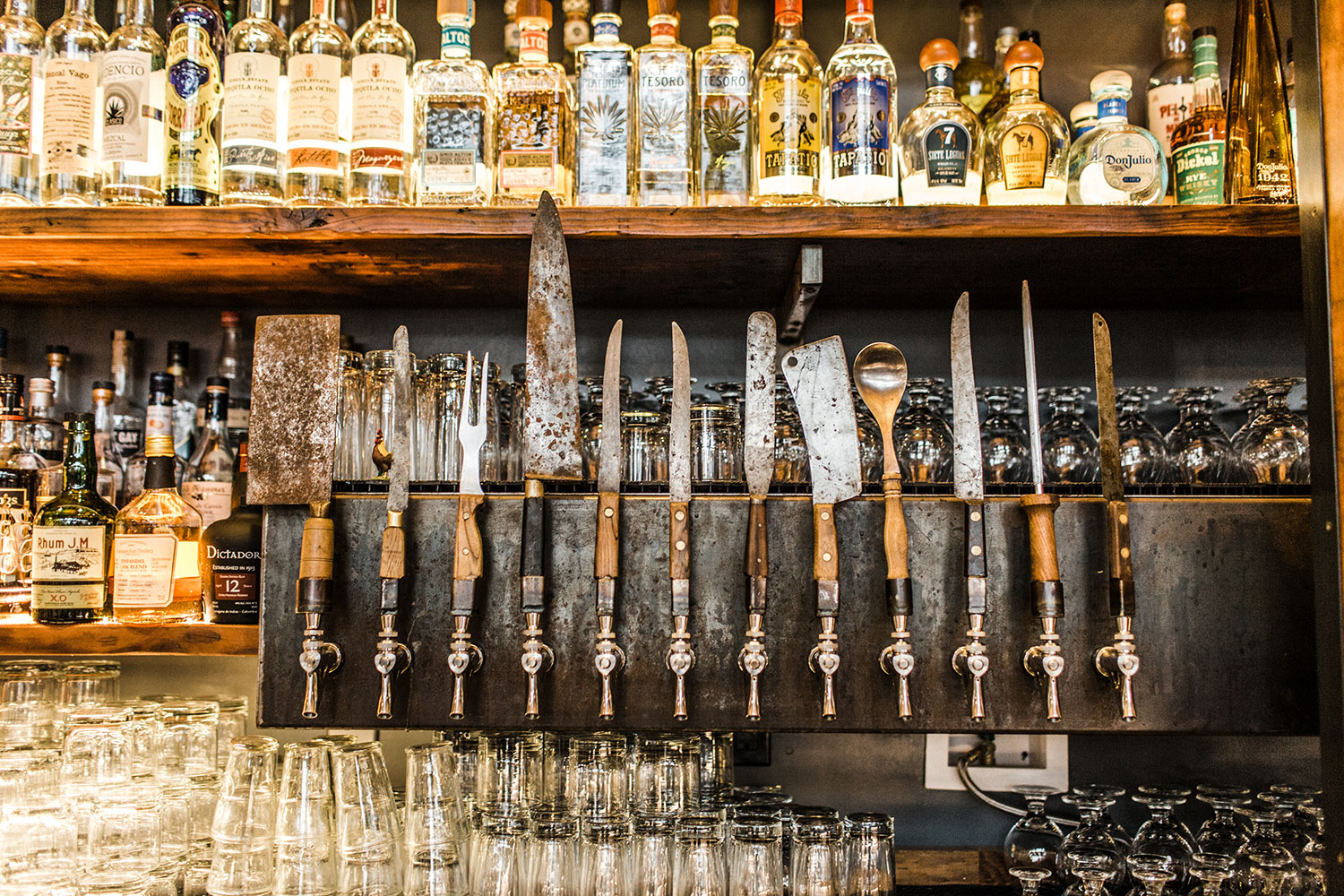
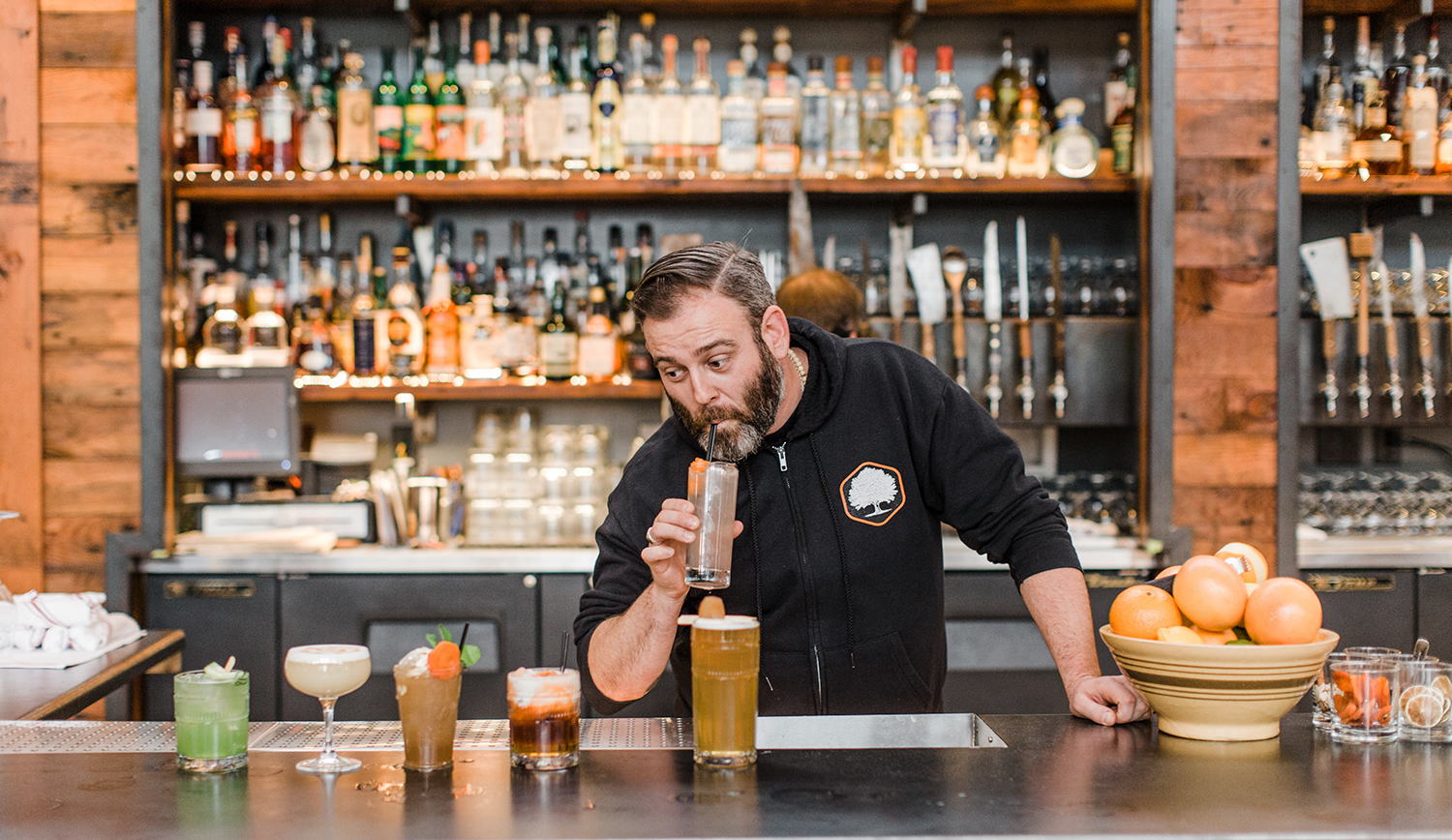
Field: How has the role of bartender changed in recent years? Is more being asked of them? and how is this turning out for both bartenders and bars?
Alfie: The role of bartenders has remained remarkably consistent for a very long time. With the growth of Pre-Prohibition bar revival culture, the focus has skewed more towards the quality of ingredients and technique, and the creation of an integrated hospitality offering that consists of more than just getting people drunk. Professionalism is a big part of that, and bartenders are expected to have command of a wide array of knowledge bases and service capabilities. A bartender at an excellent restaurant with a great bar program will be expected to execute all the responsibilities of a knowledgeable bartender, while also providing an excellent dining experience overall.
In that setting the bartender is definitely being asked to do different things than a bartender at your neighborhood dive. But the dive bartender also has skillsets that are germane to their barspace that do not necessarily come into play at more cocktail-driven spaces. I want to be careful of any implied judgements in terms of the “what kind of bar is the best” conversation, as there are many types of bars and all of them provide for different ways of imbibing alcohol that are valuable and fun.
Field: What is your personal favorite cocktail when you are not behind the bar?
Alfie: Unfortunately/fortunately there is no way to choose one. Eating and drinking for me is all about atmospherics, i.e. a hot day requires Margaritas, a hangover requires a properly-made Bloody Mary bristling with pickles, and a night out on a lovely date requires a Martini to kick things off.
Disclaimers aside, I love an Aviation. Or a Perfect Manhattan. Or a Maragarita. But I really love Hemingway Daiquiris too.
#brewstersbeergarden
Building Davinci
The Makers
Since its founding in San Francisco in 1986, Burning Man has evolved from a renegade artists’ experiment into a widely respected community of makers, dancers and thinkers. These self-described Burners now gather annually in Nevada’s inhospitable Black Rock Desert. They come to celebrate creative expression, open-hearted collaboration and radical self-reliance.
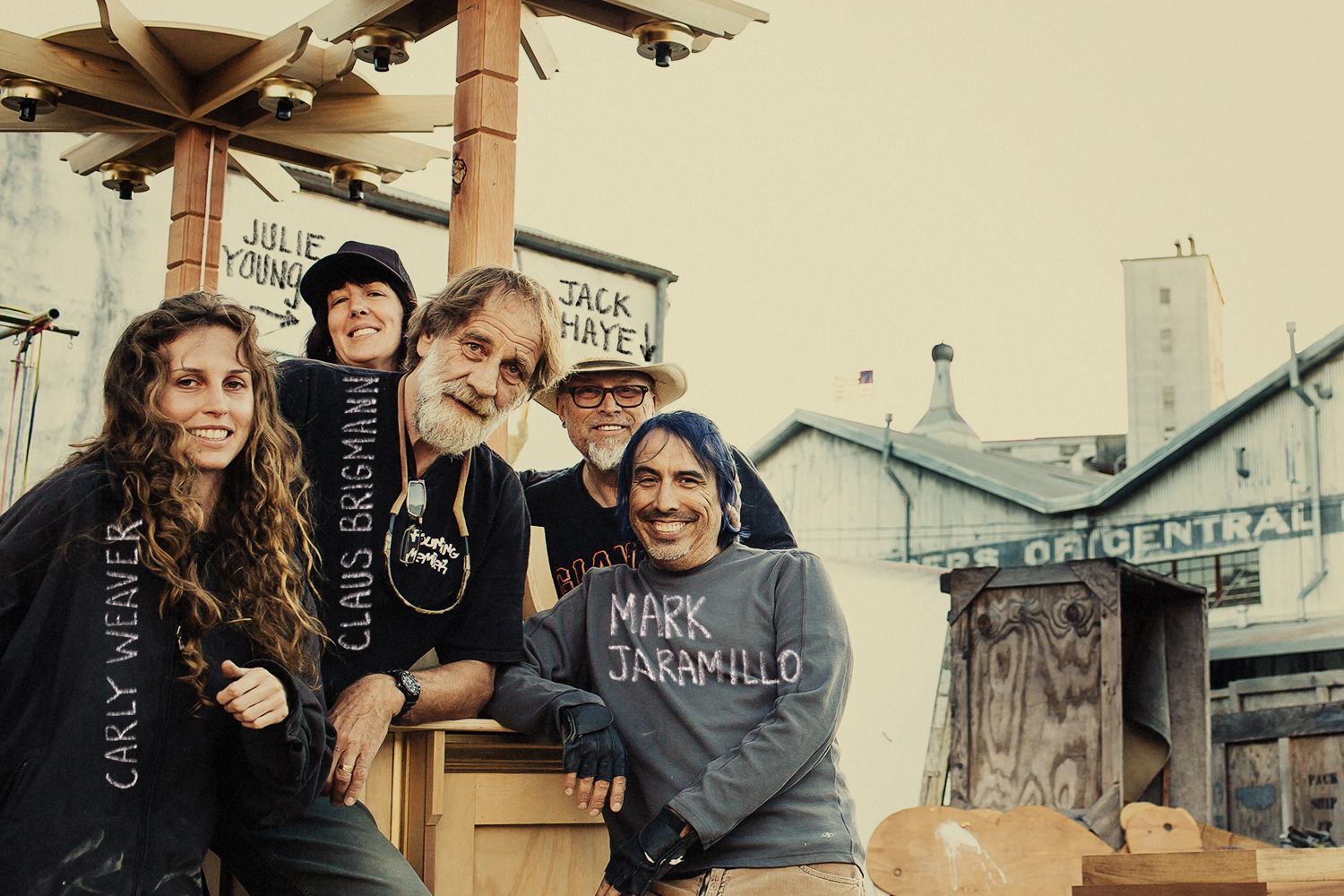


An event theme guides the annual innovations of these spirited makers. In 2016, the selected theme “Davinci’s Warehouse” spoke to the culture renaissance blowing from the arid, expansive desert back to faraway townships like Petaluma, California. Here, longtime Burners Claus Brigmann, Jack Haye, Mark Jaramillo, Carly Weaver, and Julie Young build their next creation. Having attended the event since the 1990’s, this crew understands the value of the Burning Man experience.
For more information, check out www.burningman.org.

And to be able bring that energy back with us to our hometown?
Well, that’s the biggest gift of all.”
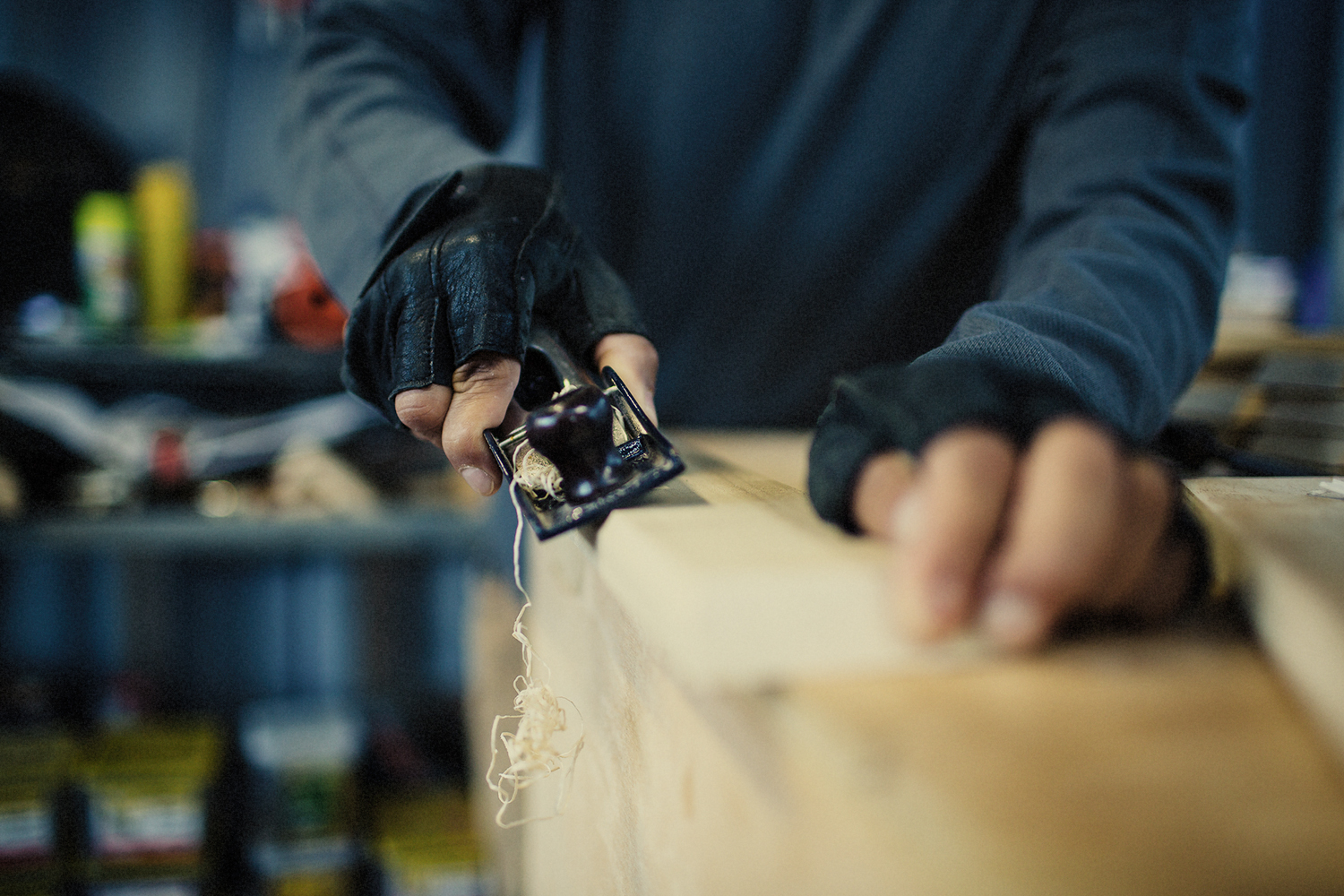


Installation photos by Claus P Brigmann
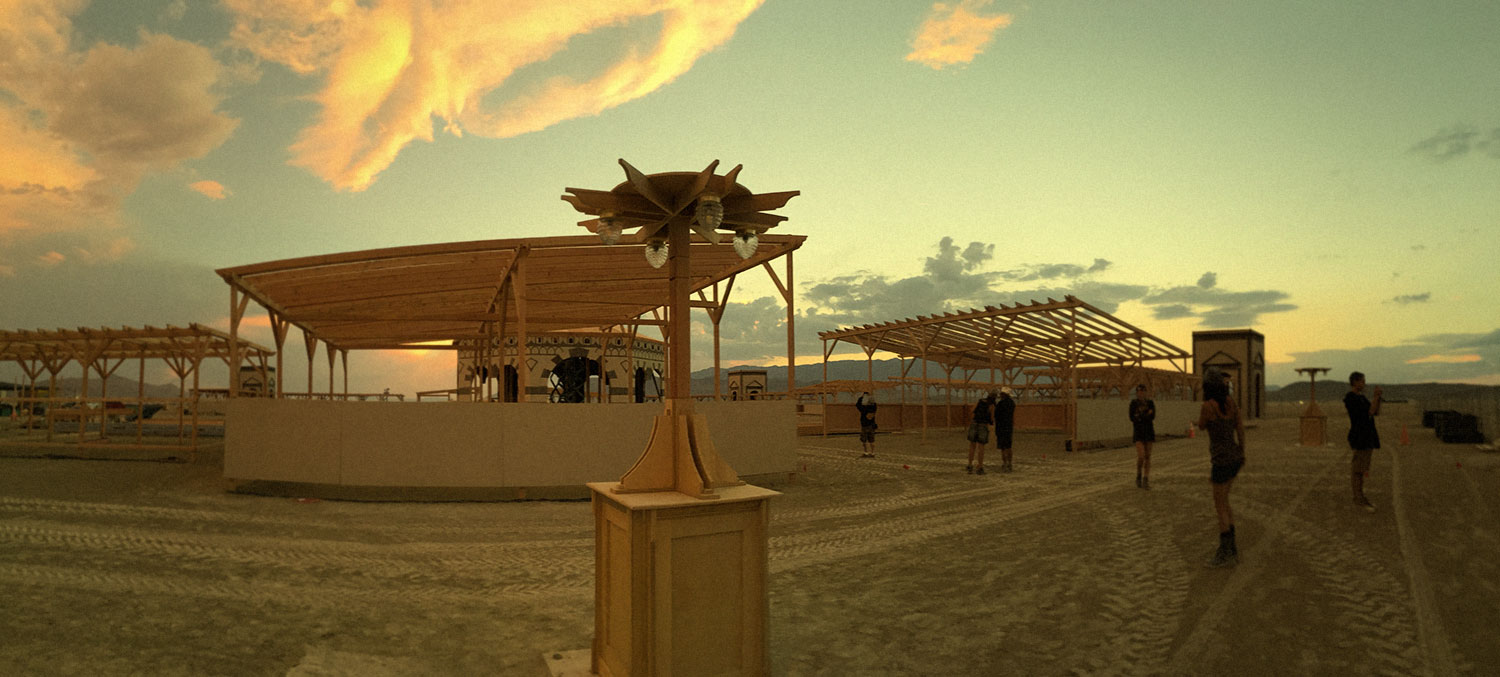



Workspace: Tim Nicholls
Timothy Nicholls opened the roll up doors to his bike repair and sales shop in February 2017, contributing to the interesting new mix of businesses along Petaluma’s Second Street corridor. Cycle Chvrch Cycles has less of the feel of a typical bike shop, and feels more like an artist’s studio. Tim approaches his craft from a design perspective, refurbishing bikes with purposeful detail from carefully reconstructed mechanics to beautiful pinstriping work. He takes massive pride in his finished products and if you buy a bike from him, you can be sure he will be there to provide ongoing maintenance to your two-wheeled friend. Tim refurbishes bikes not just for sale but also donates to local organizations including COTS. You can find him most days from 11-7 in his shop, and also on social media @cyclechvrchcycles. Look for the handpainted signs (painted by Tim) on the nearby corners to show you the way.

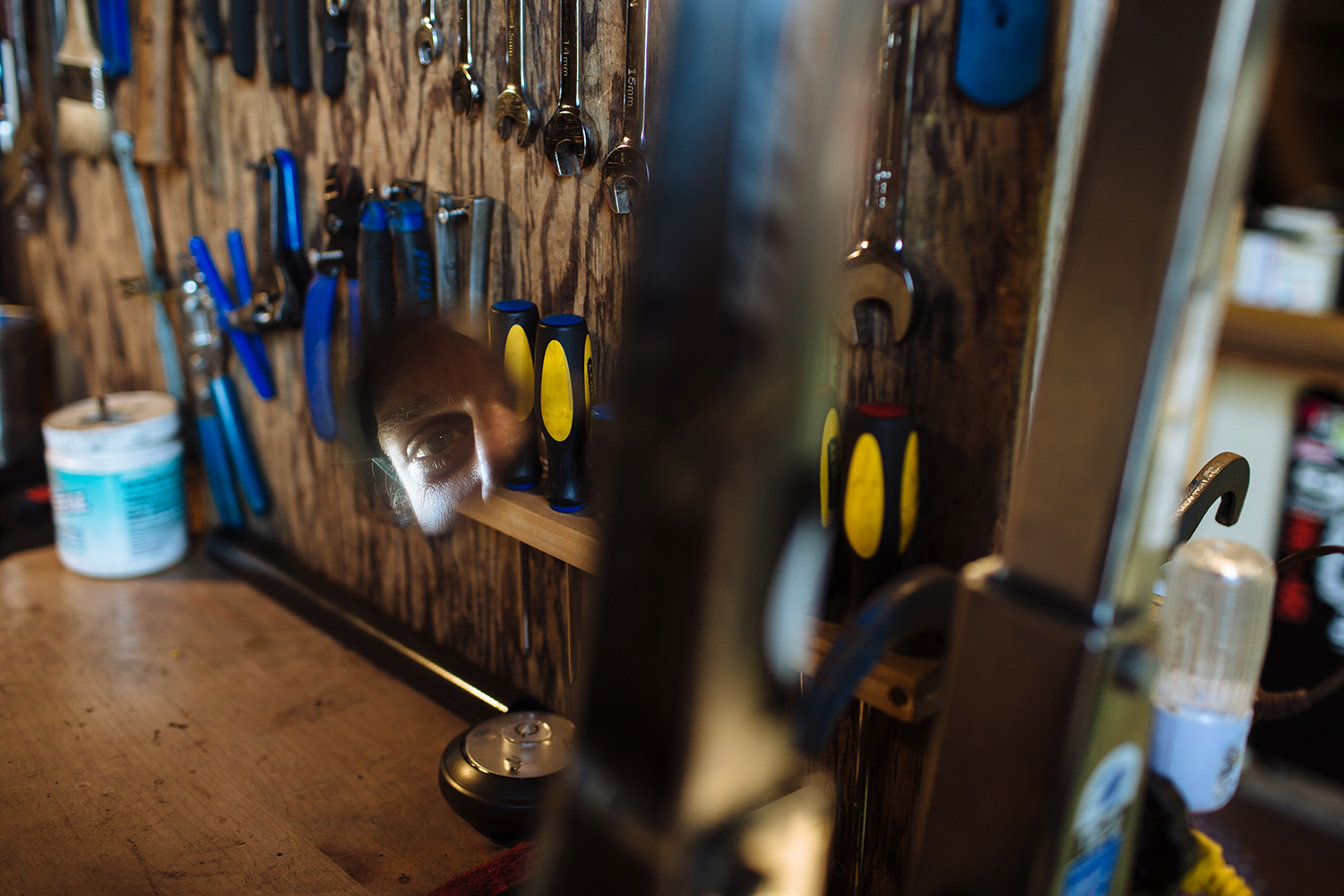


Stillwater Spirits
Visiting Stillwater Spirits on a Friday afternoon feels like walking into a party in progress. Blues music booms from wall-mounted speakers. Local brewers wander in to grab a drink and share their latest beer. The distillery dogs greet people who walk by and wonder what they’re missing. But there’s serious business happening inside those barrels.
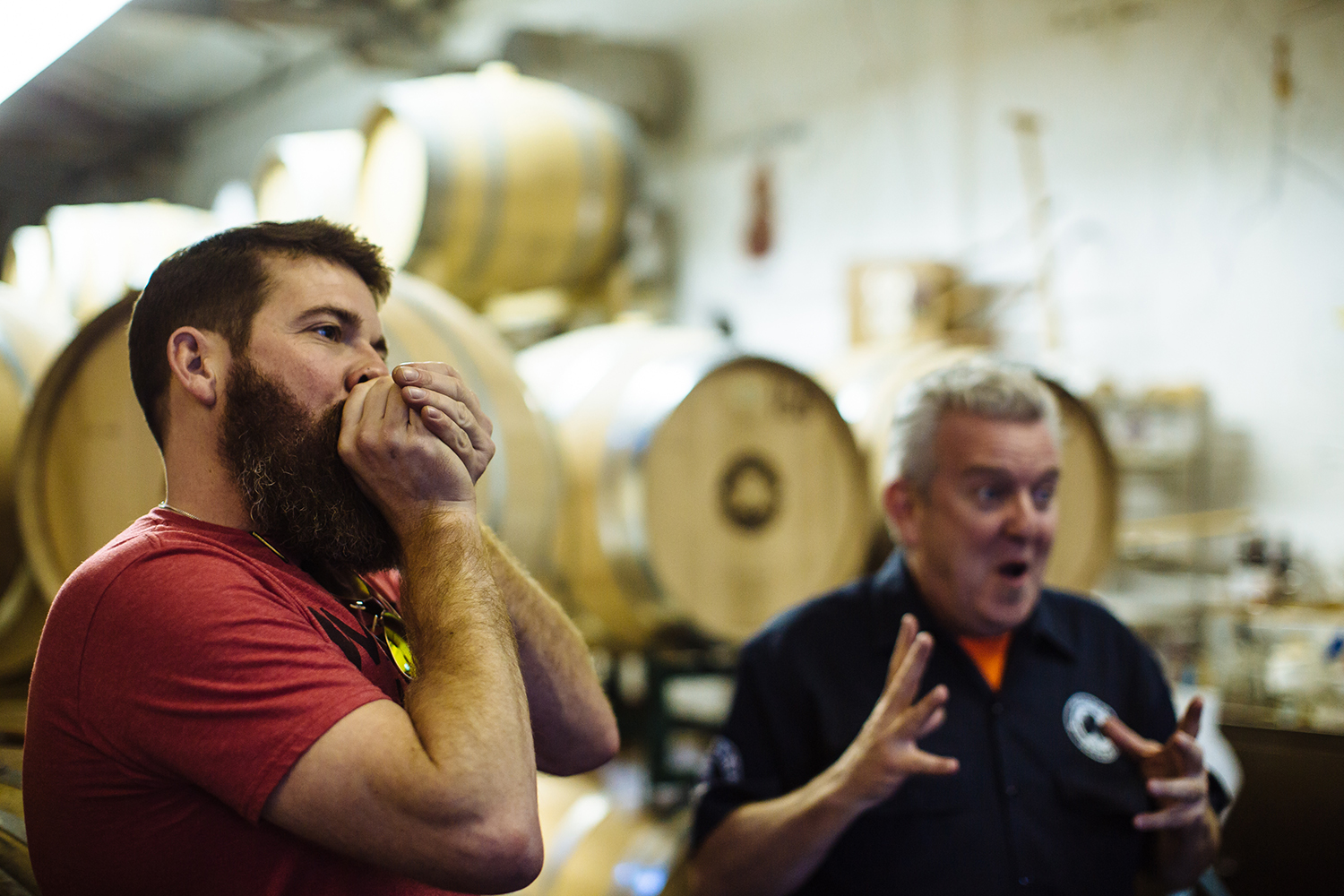
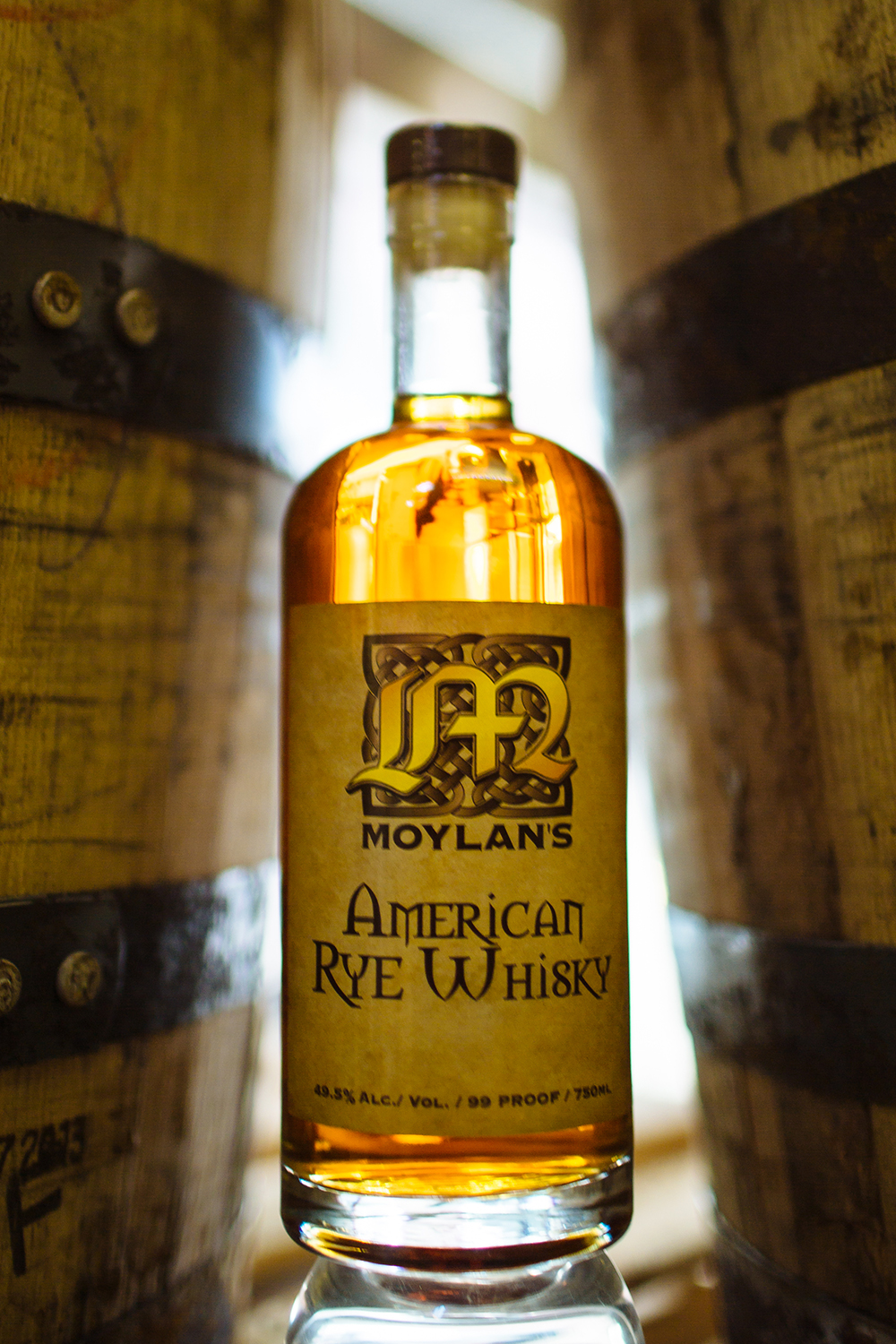
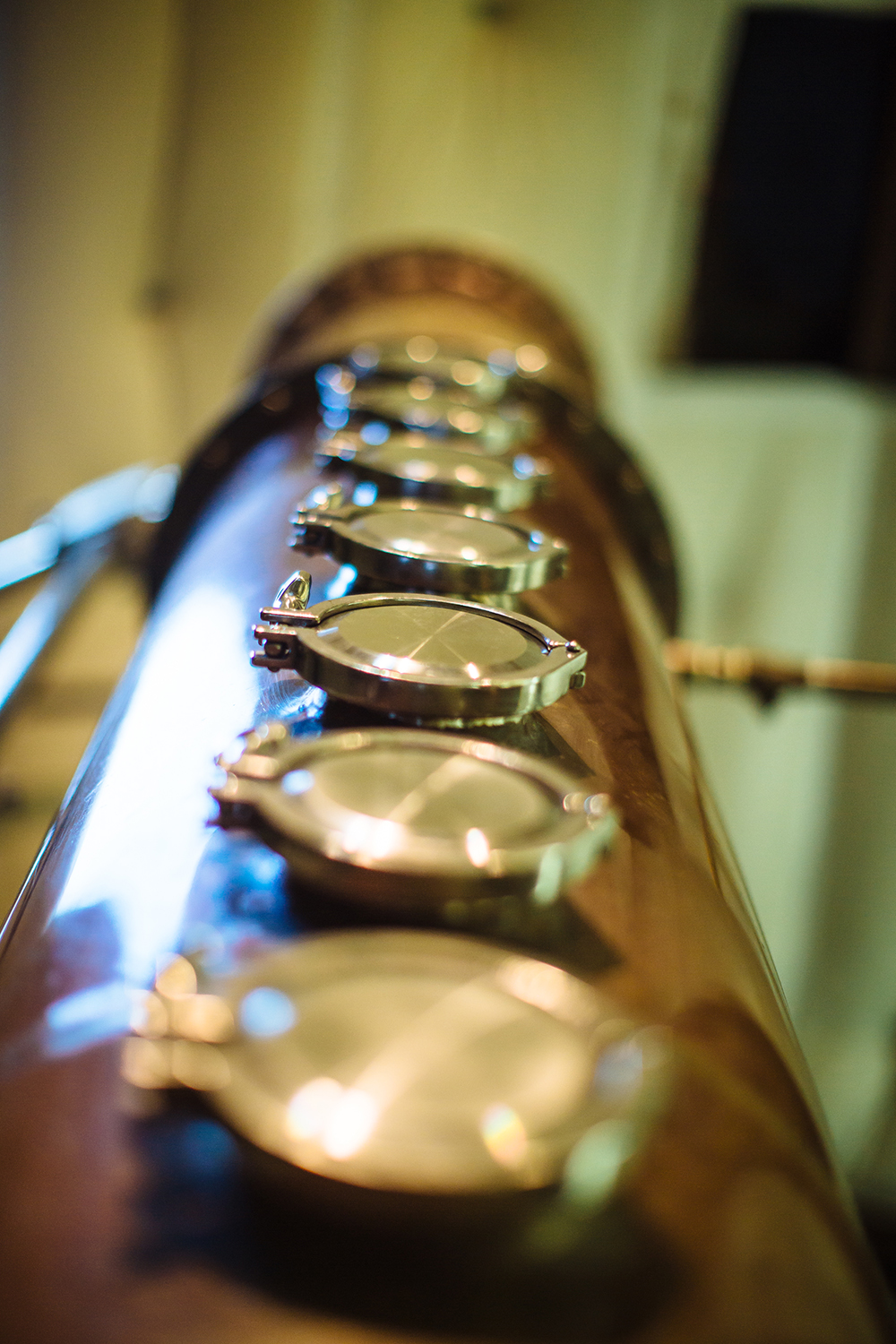
Ever since Brendan Moylan opened Stillwater Spirits at the Petaluma Foundry Wharf in 2004, the awards have been pouring in — including best in show and best in category at this year’s New York World Wine & Spirits Competition for Moylan’s cask-strength single malt whiskey finished in port barrels and a Gold Award from the American Distilling Institute for Moylan’s cask-strength single malt whiskey.


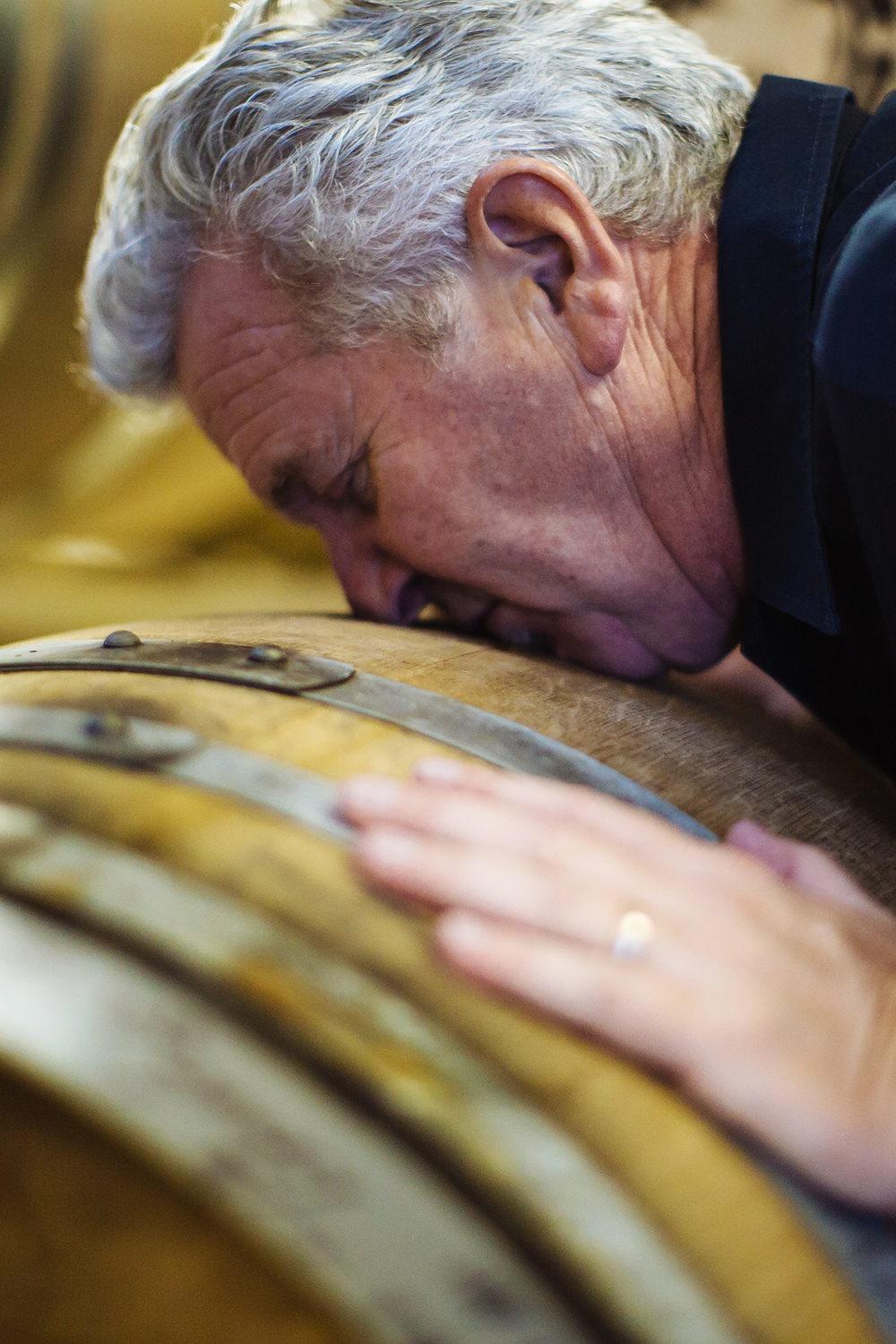
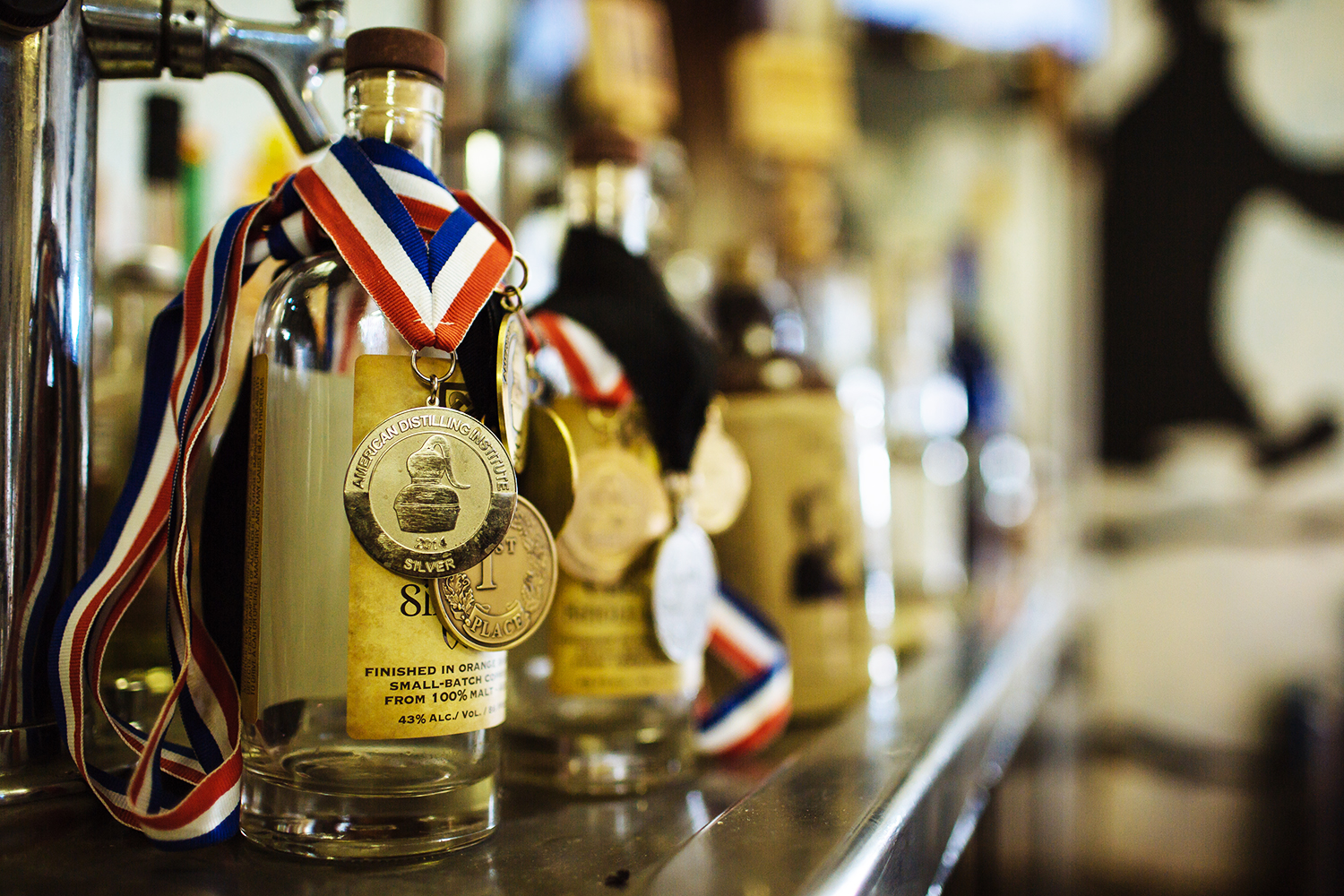
Long before the first barrel rolled in or out of the distillery, Moylan was already a big part of the Bay Area beverage scene. His brewpubs Marin Brewing Company and Moylan’s Brewery & Restaurant have been local favorites for decades.
Distiller Tim Welch is working with Moylan to make a big name for this little distillery, even though they’ll produce only 50 barrels this year. In addition to single malt whiskies, Stillwater also makes bourbon, rye, vodka, gin, liqueurs, grappa, brandy and beer schnapps. Most of this is put out under the Moylan’s name, although about a quarter of production is dedicated to making spirits for other companies, including grappa for next-door neighbor Sonoma Portworks.
Welch is experimenting with mixing a whiskey finished in sherry barrels with their award-winning port finished whiskey. He and Moylan treat the barrels like they’re living beings and not containers of product.
With Ralph Steadman murals covering the walls and a steady stream of blues music playing after hours to keep the barrels company, Stillwater isn’t just a place that makes good booze. It’s also a second home for people who are passionate about spirits.
